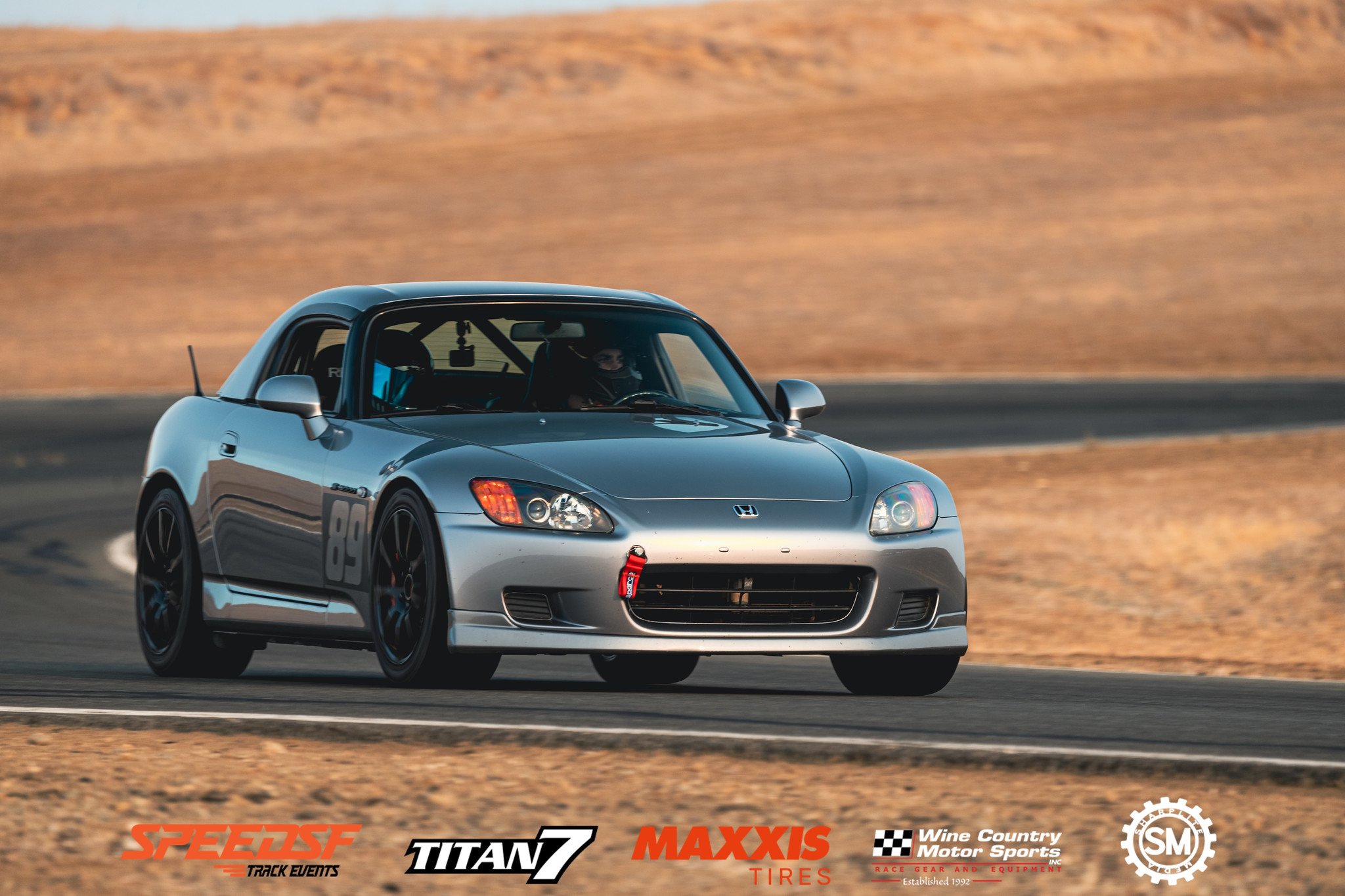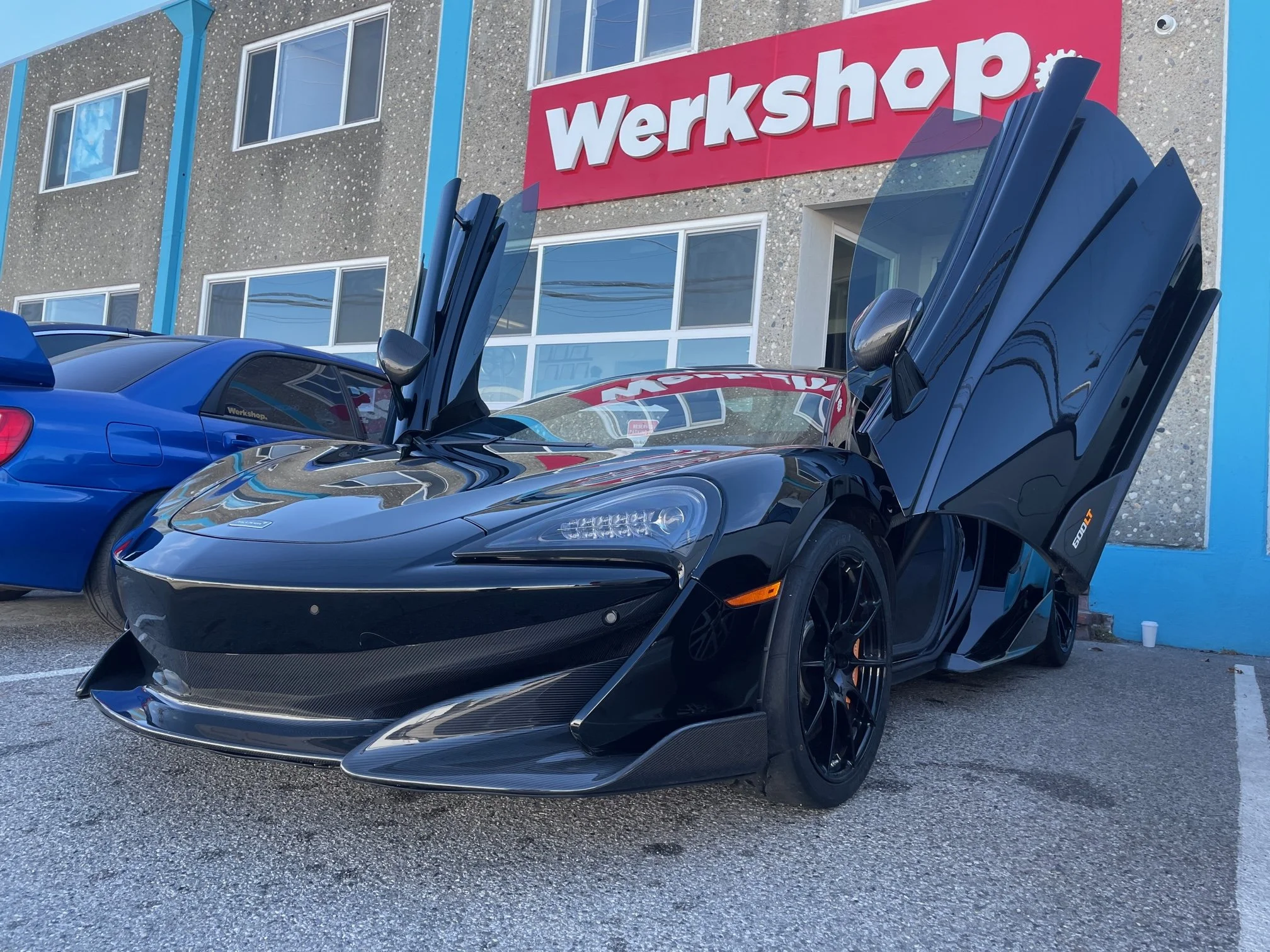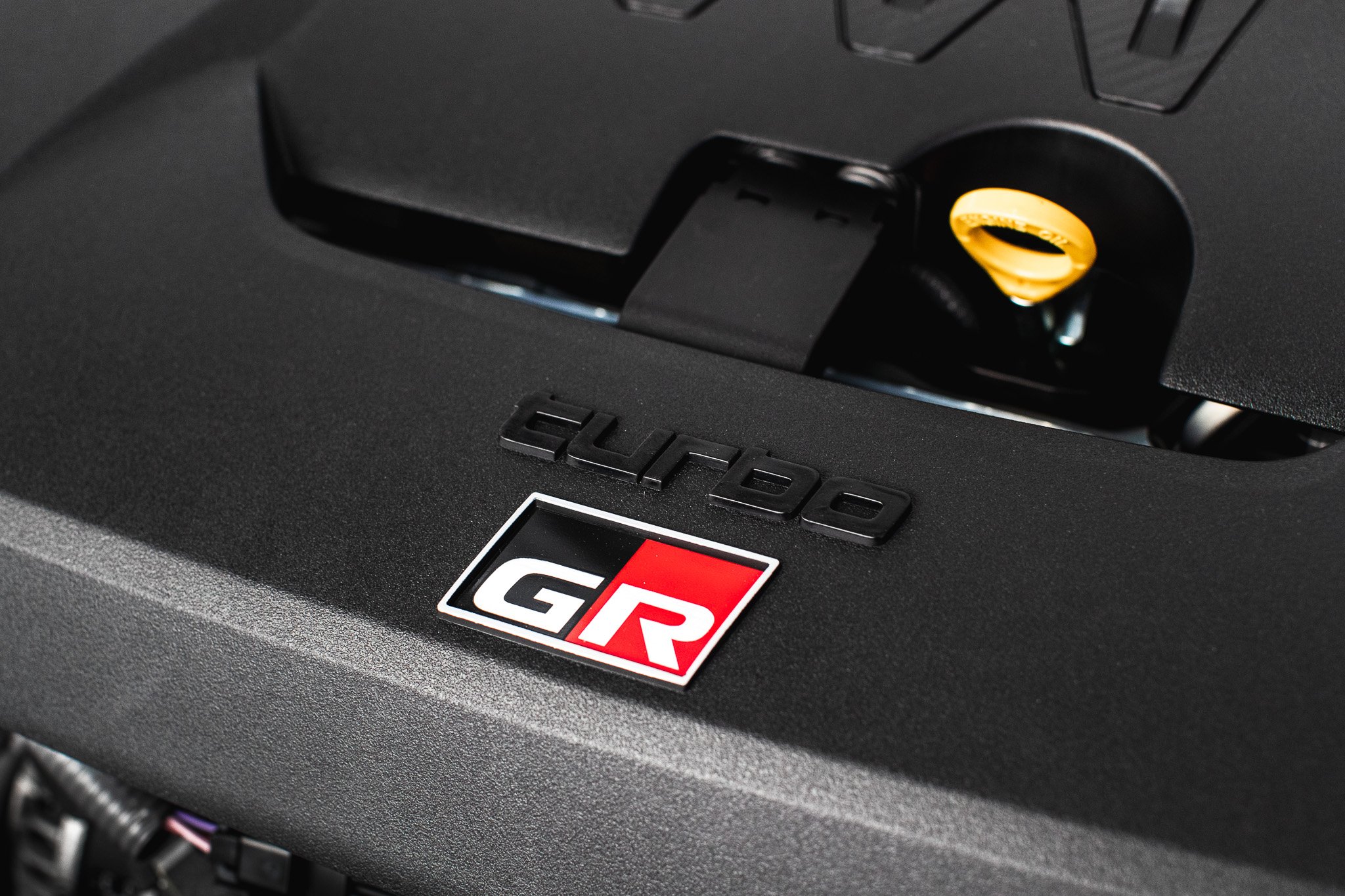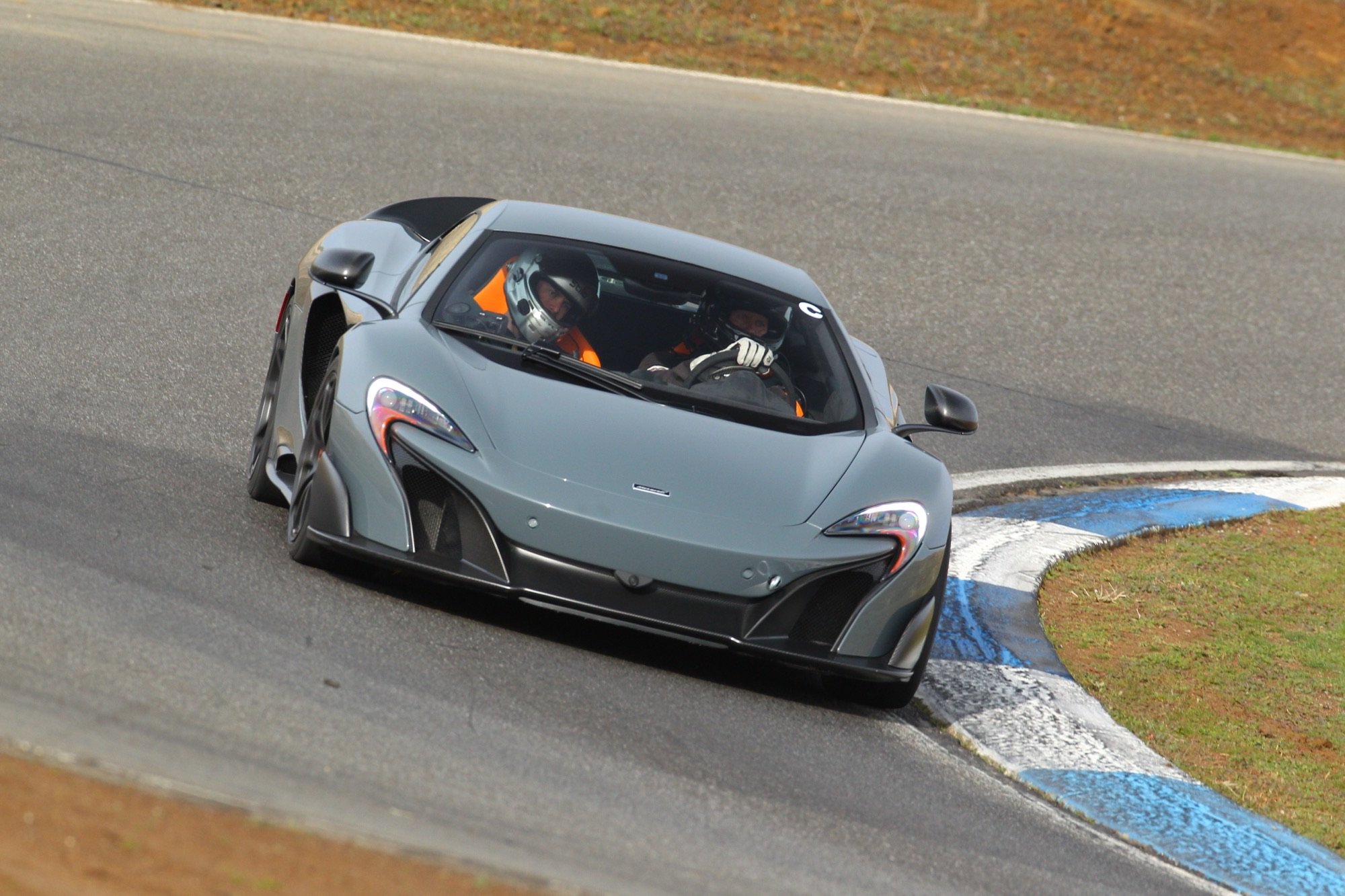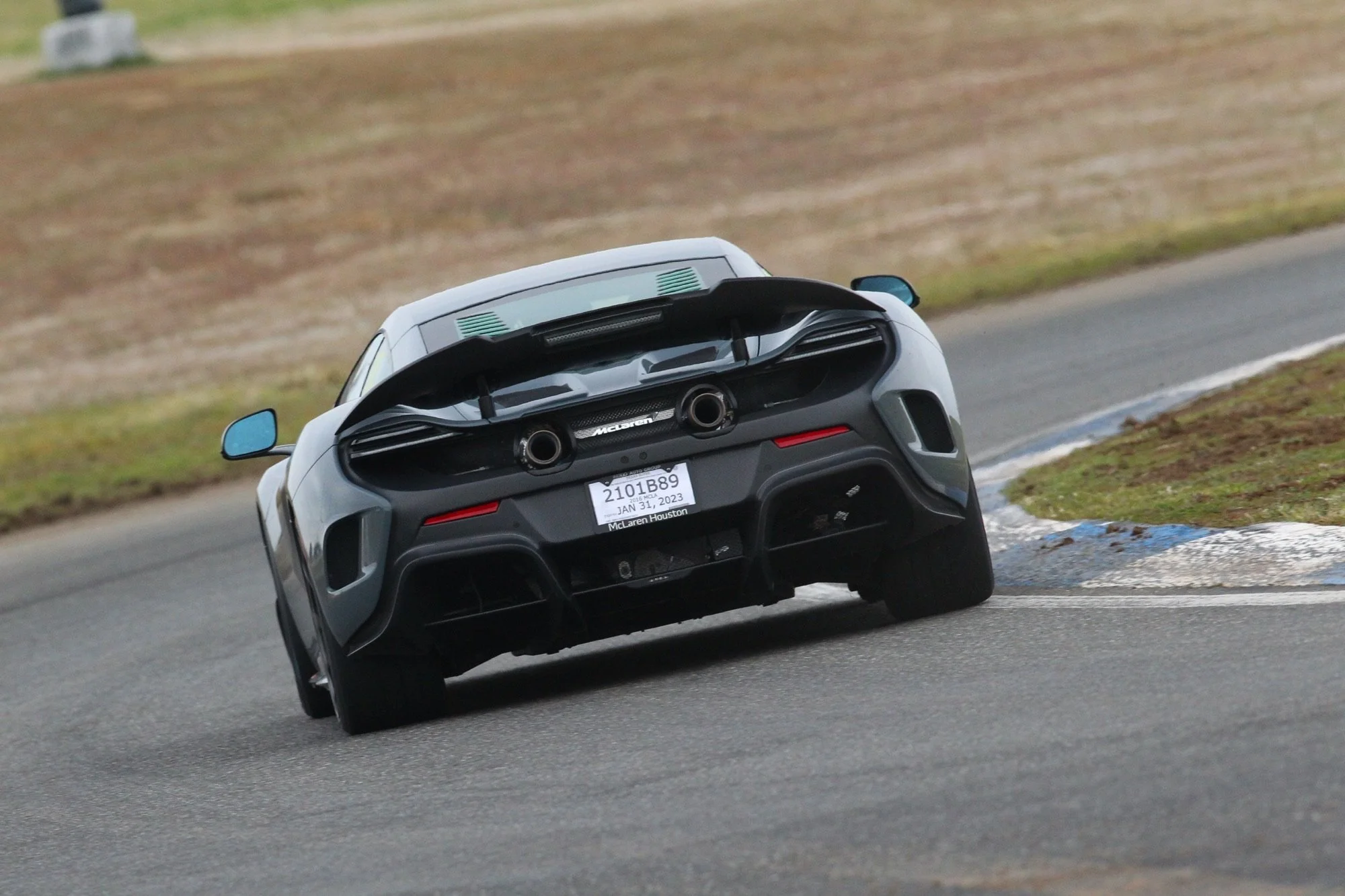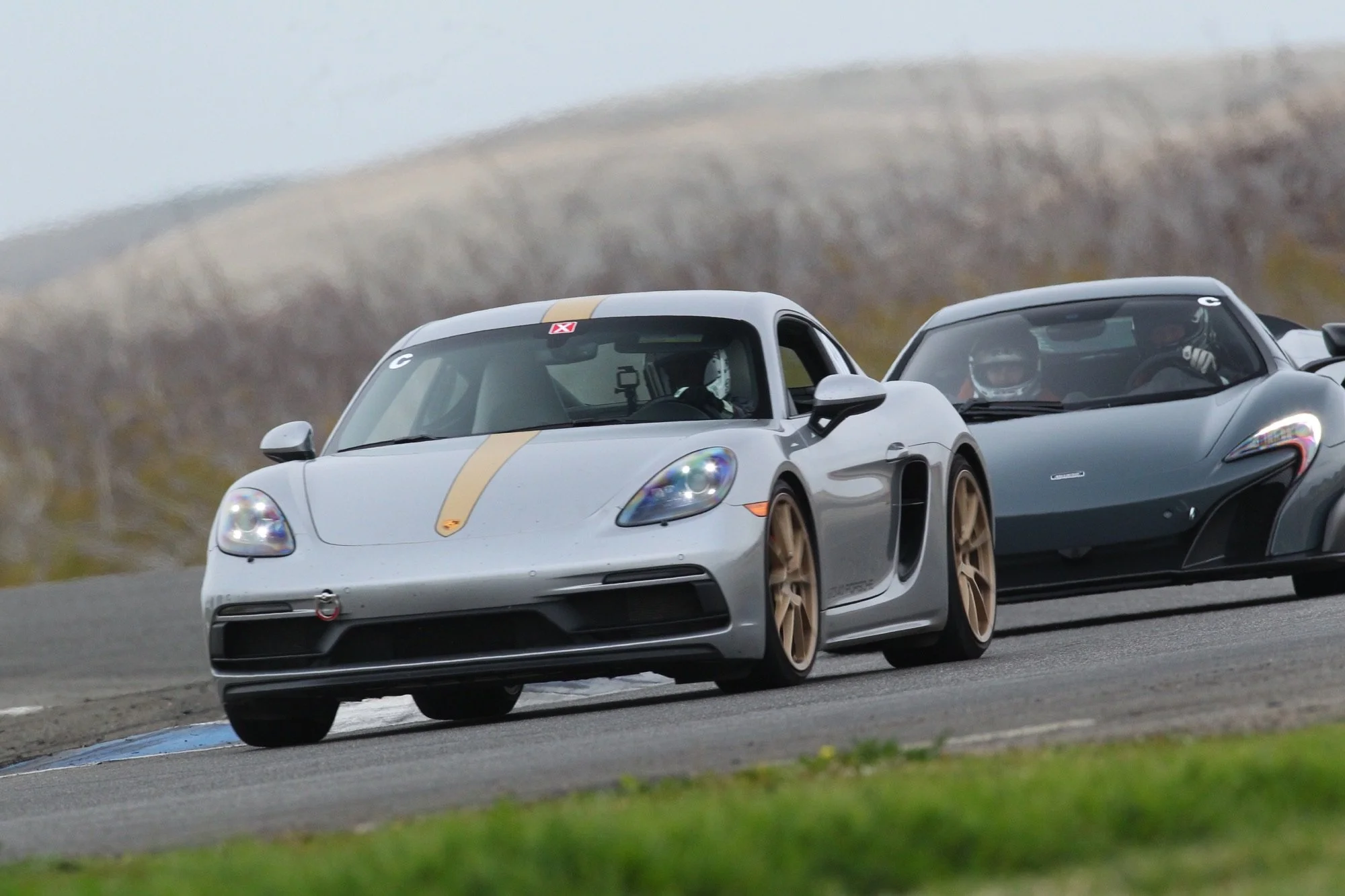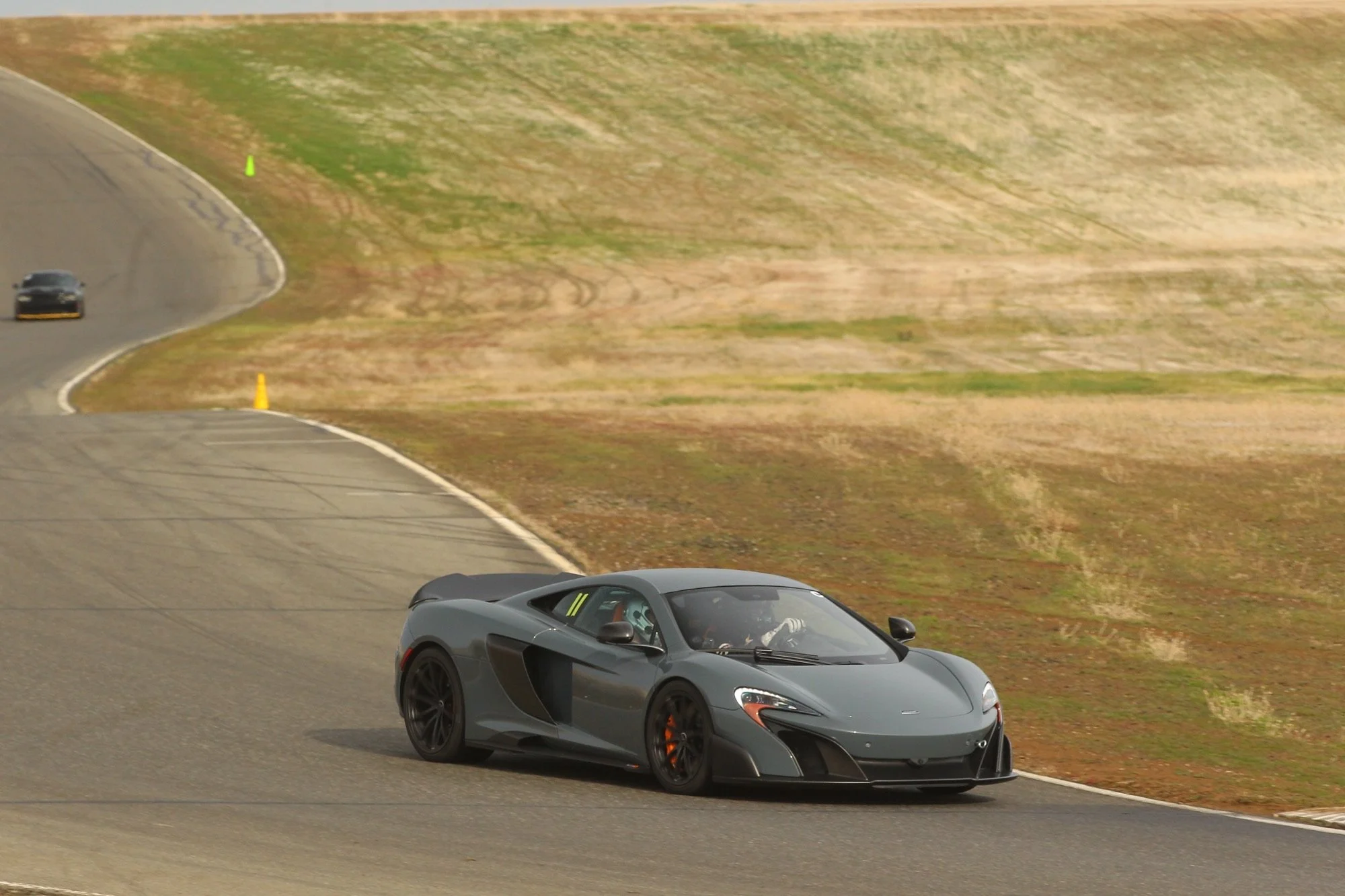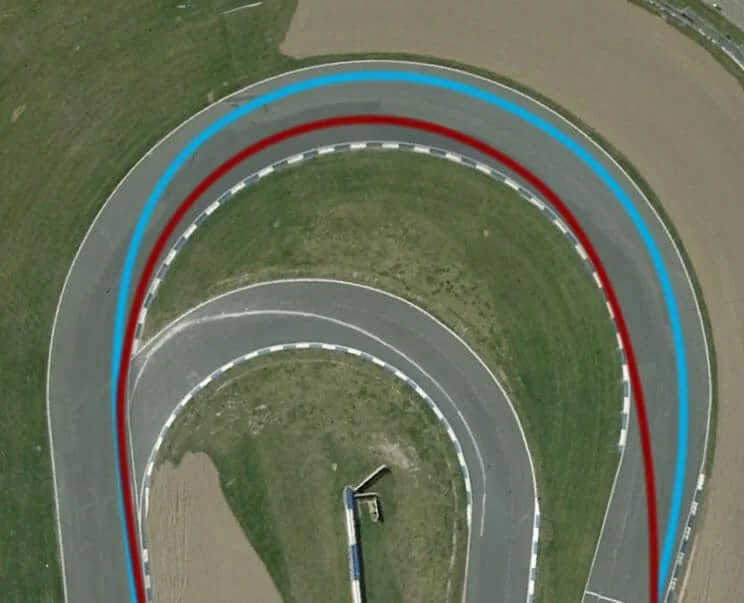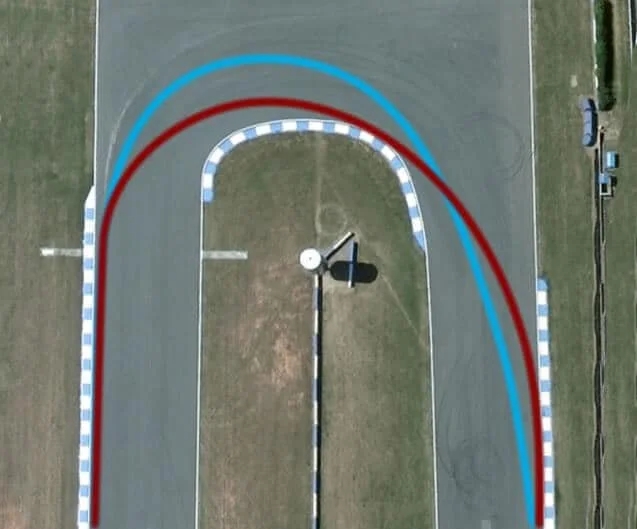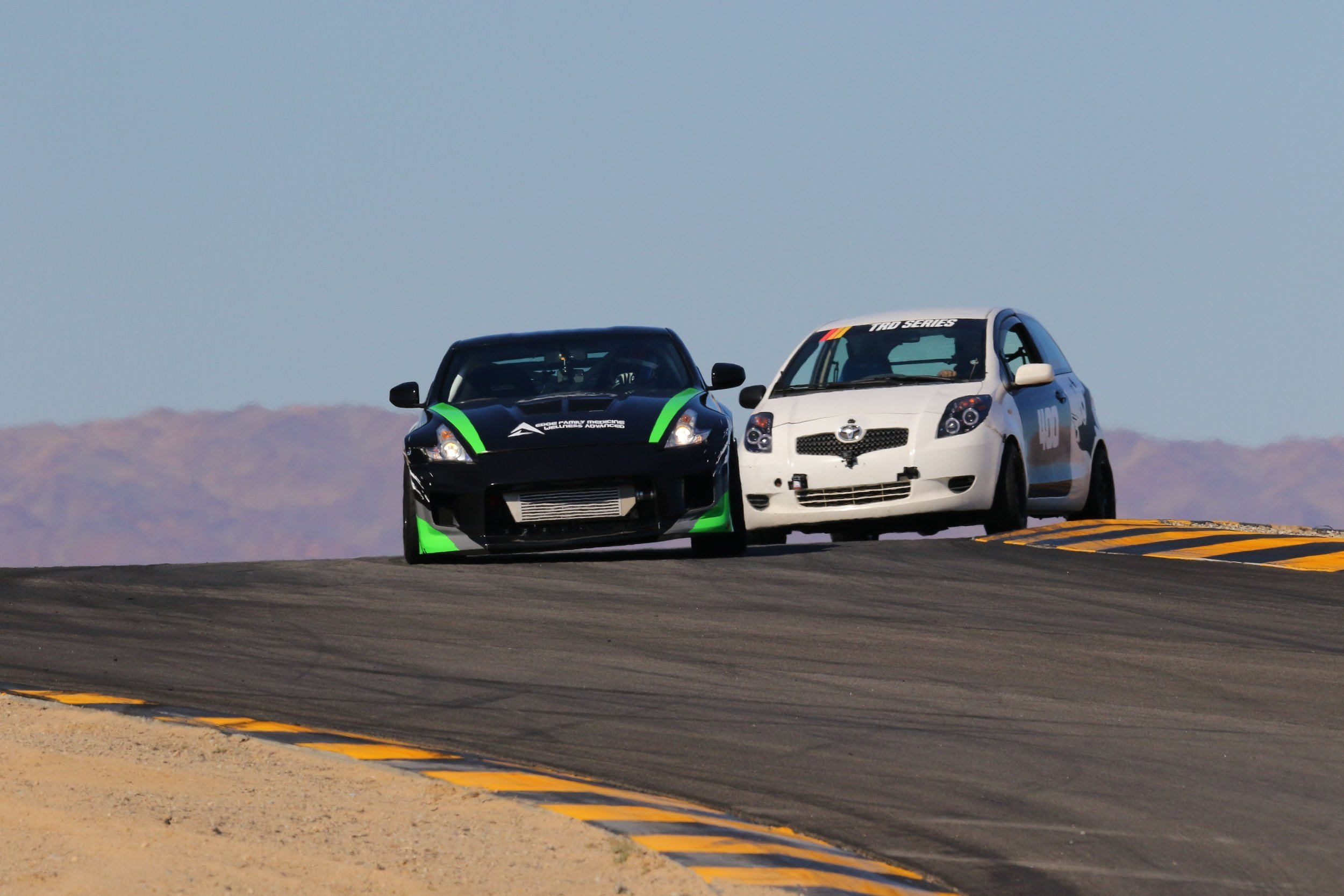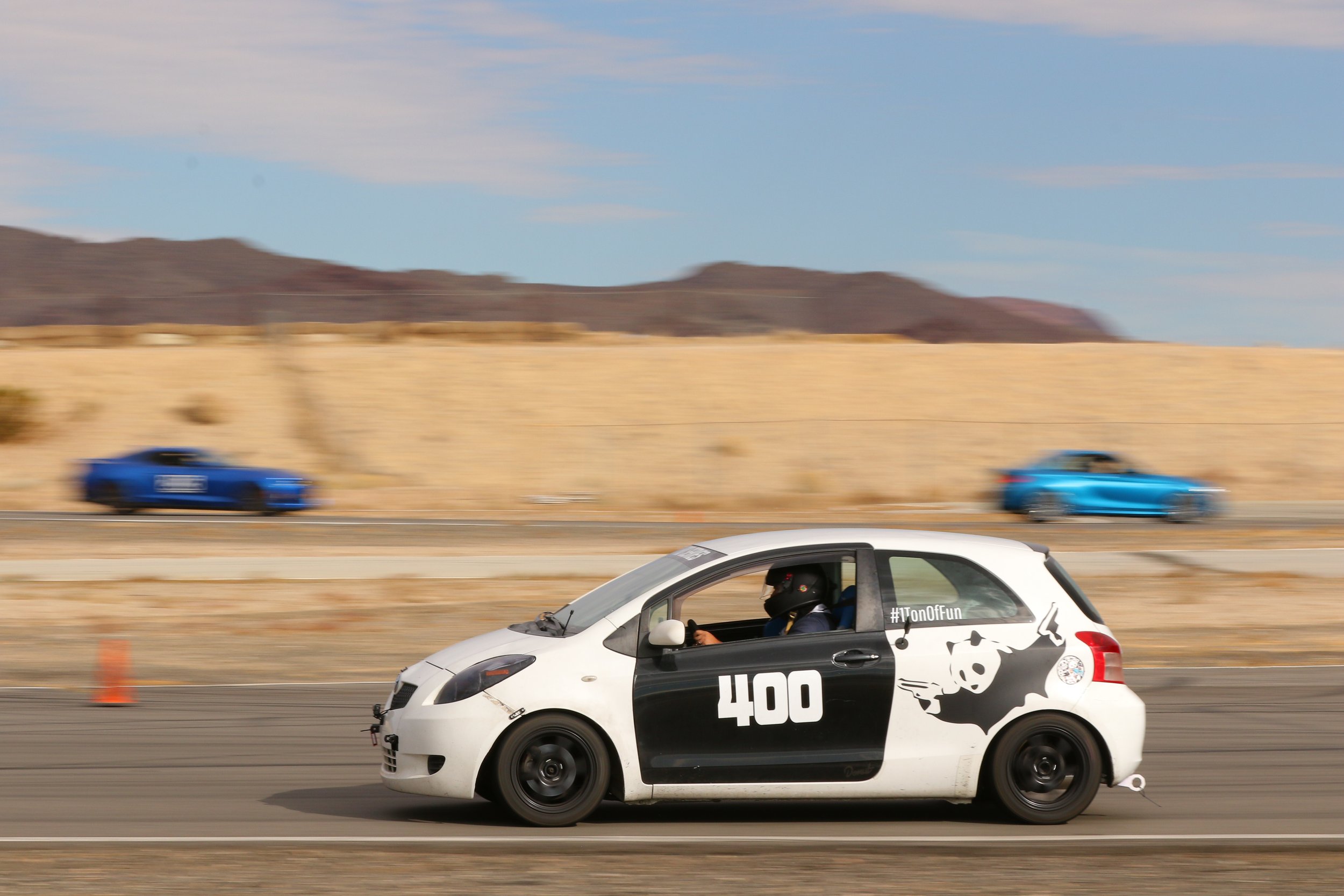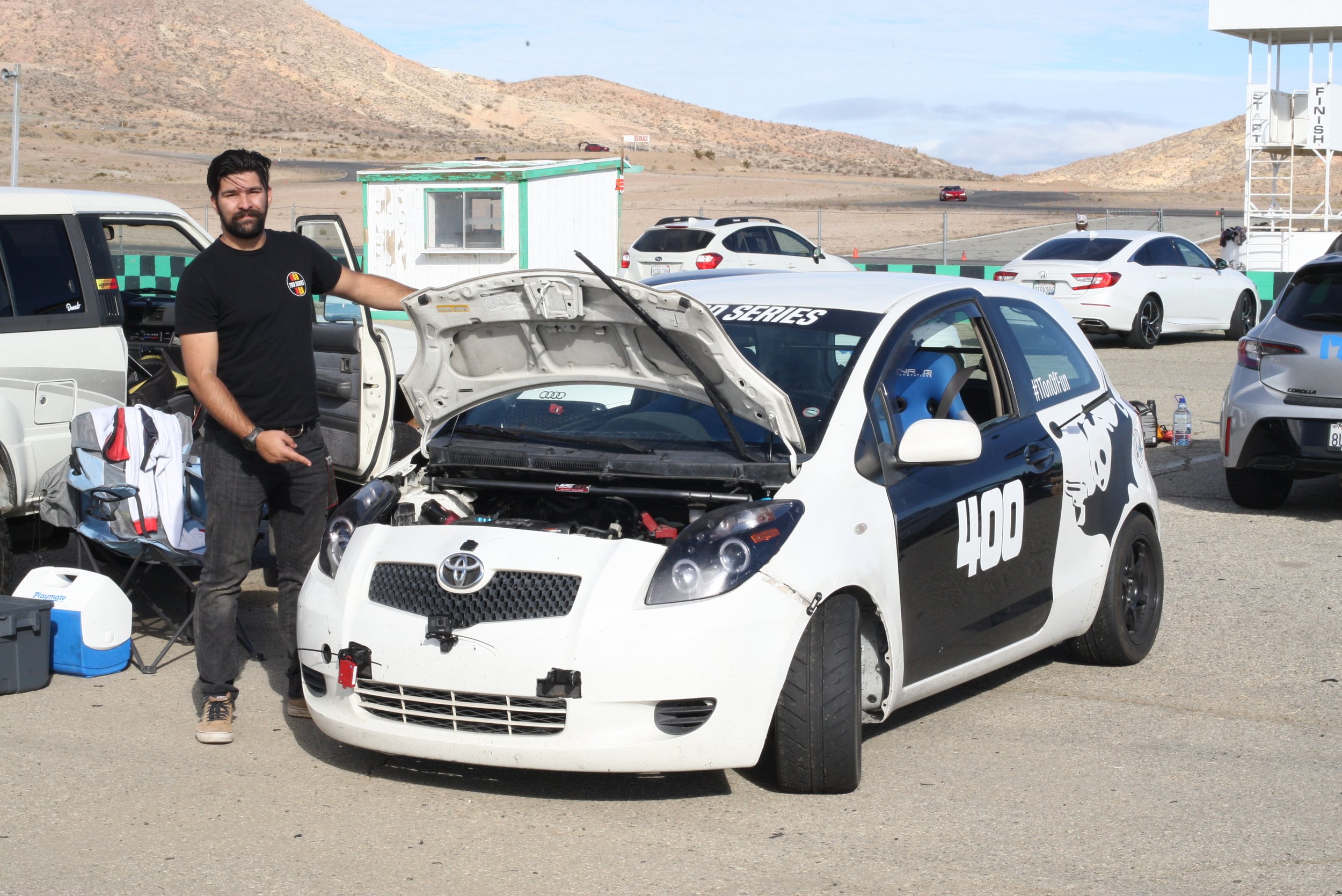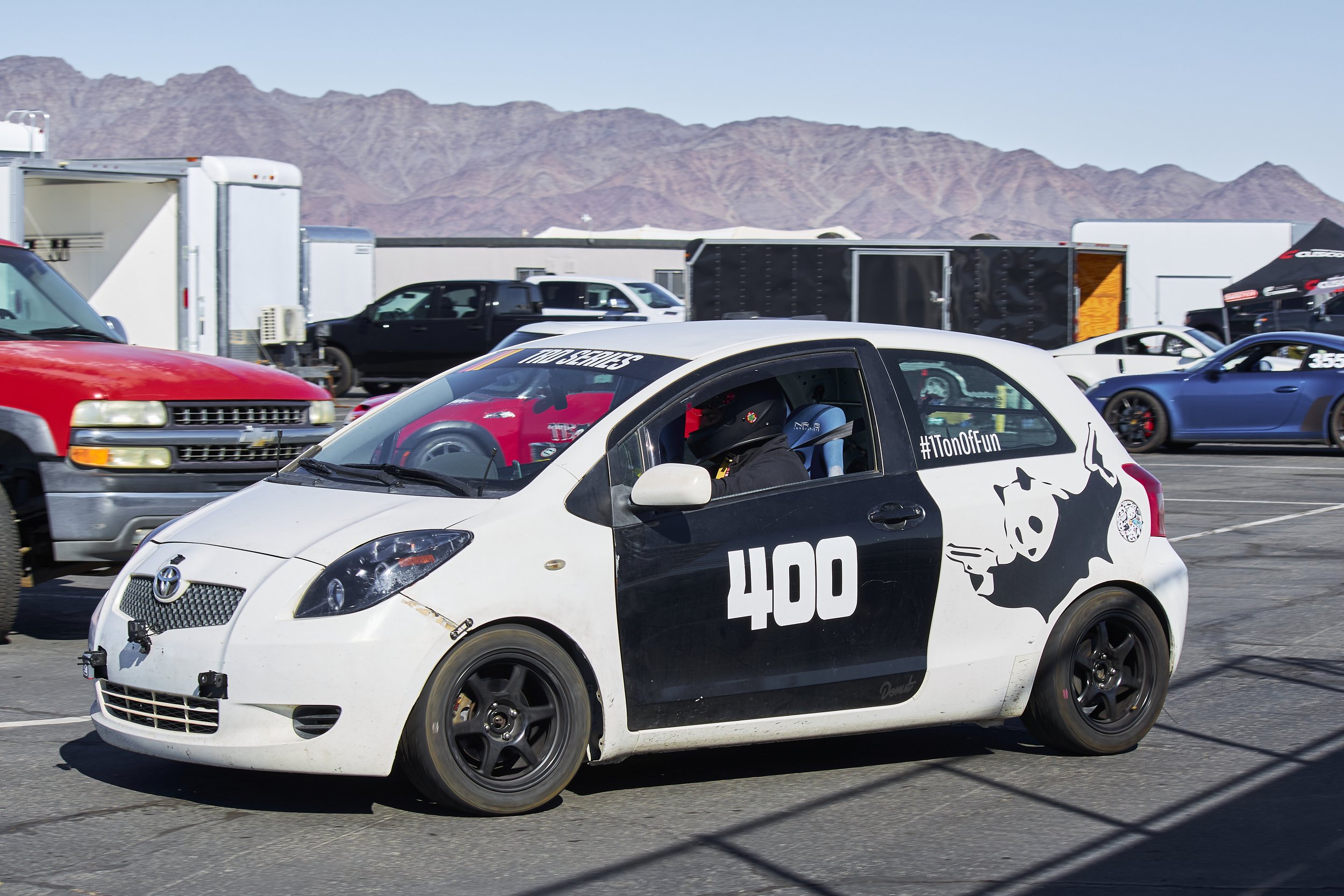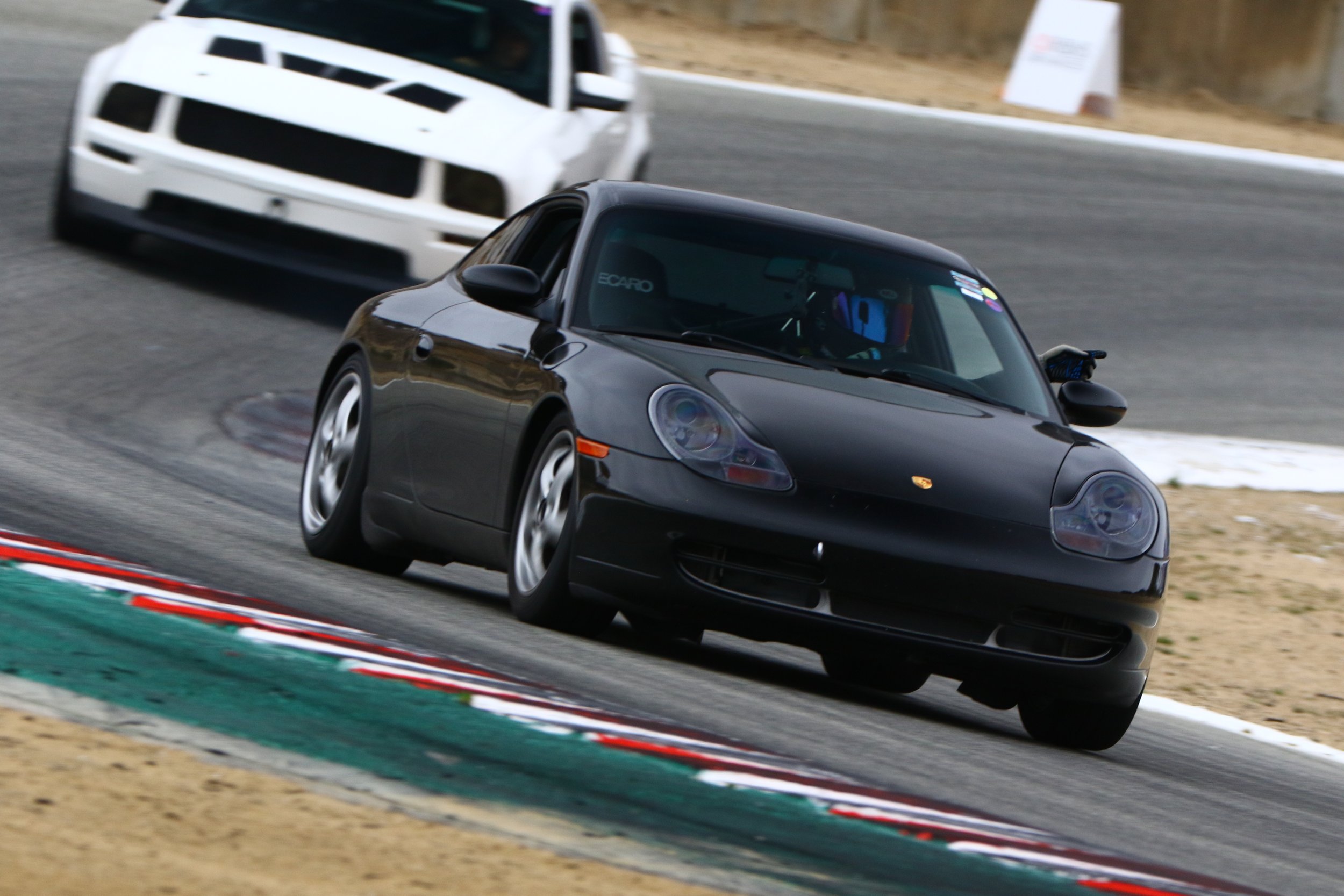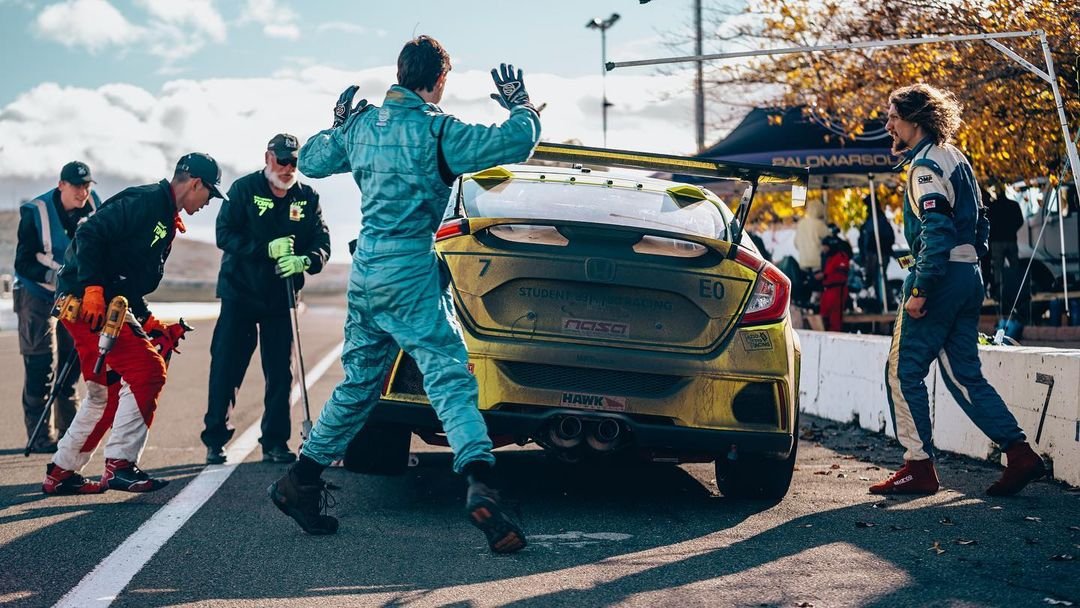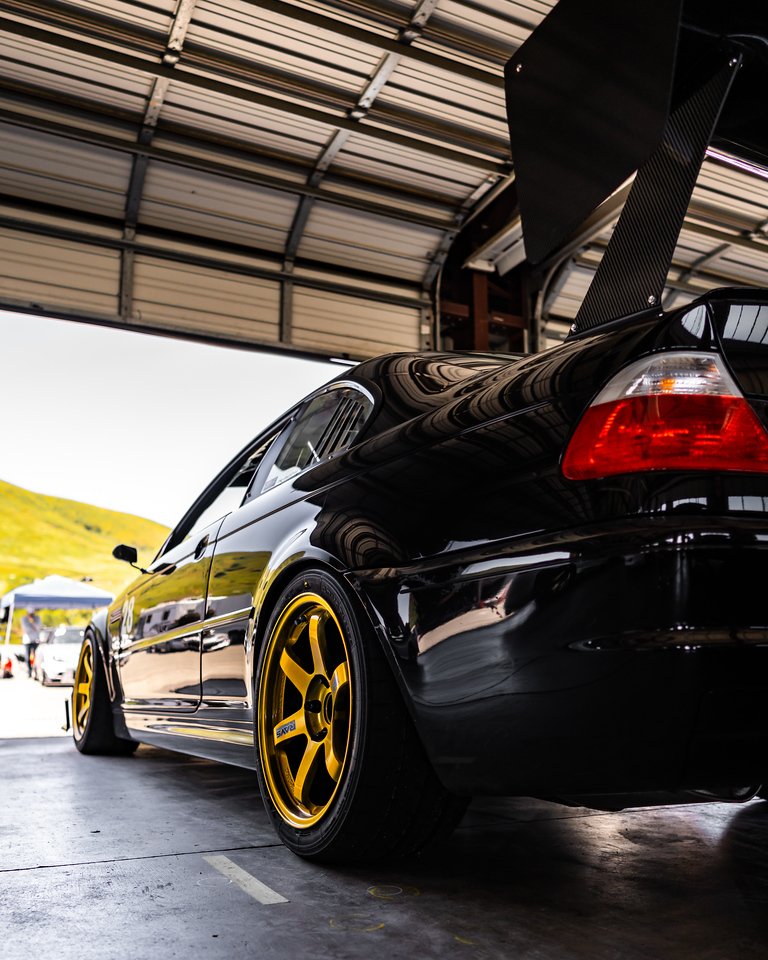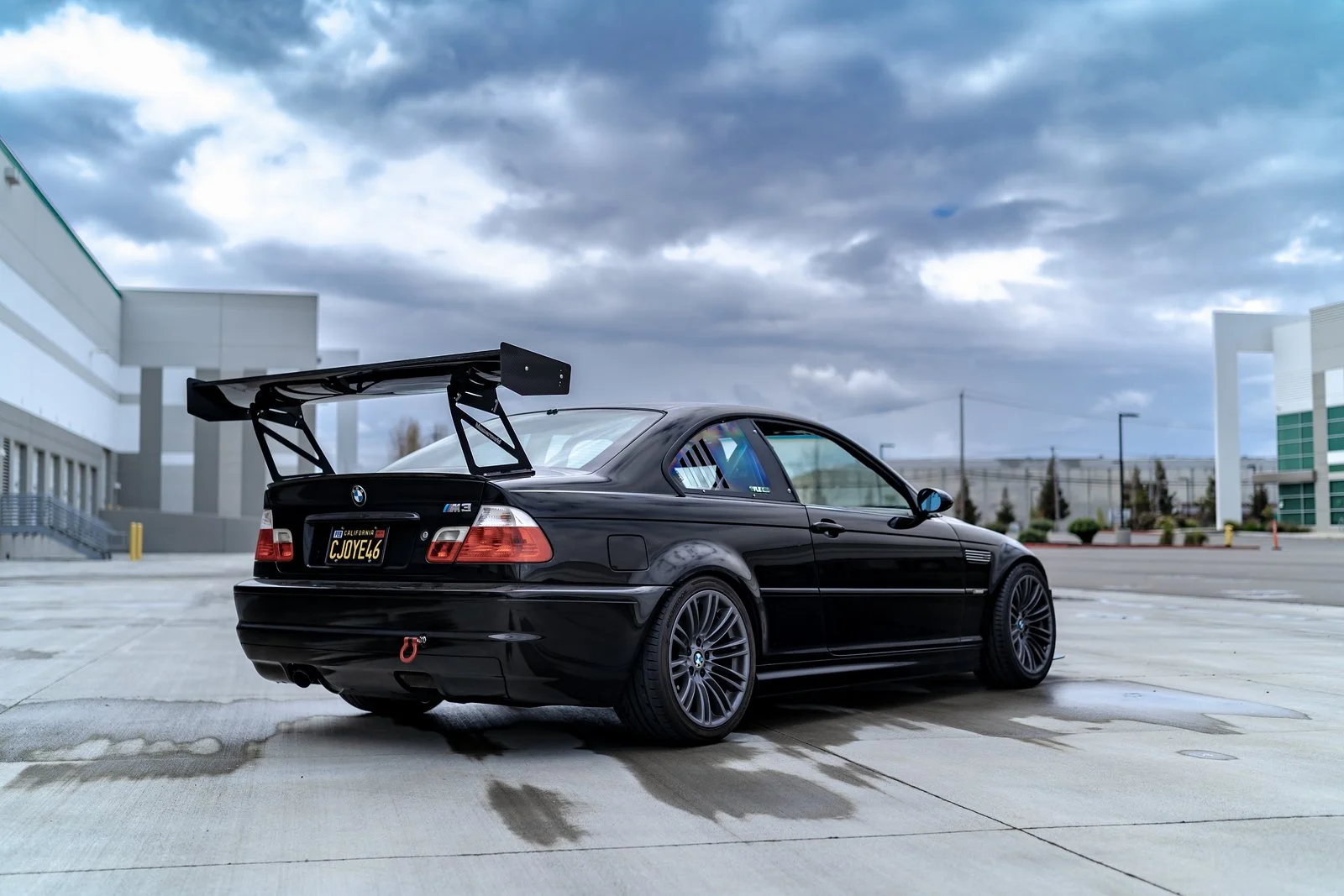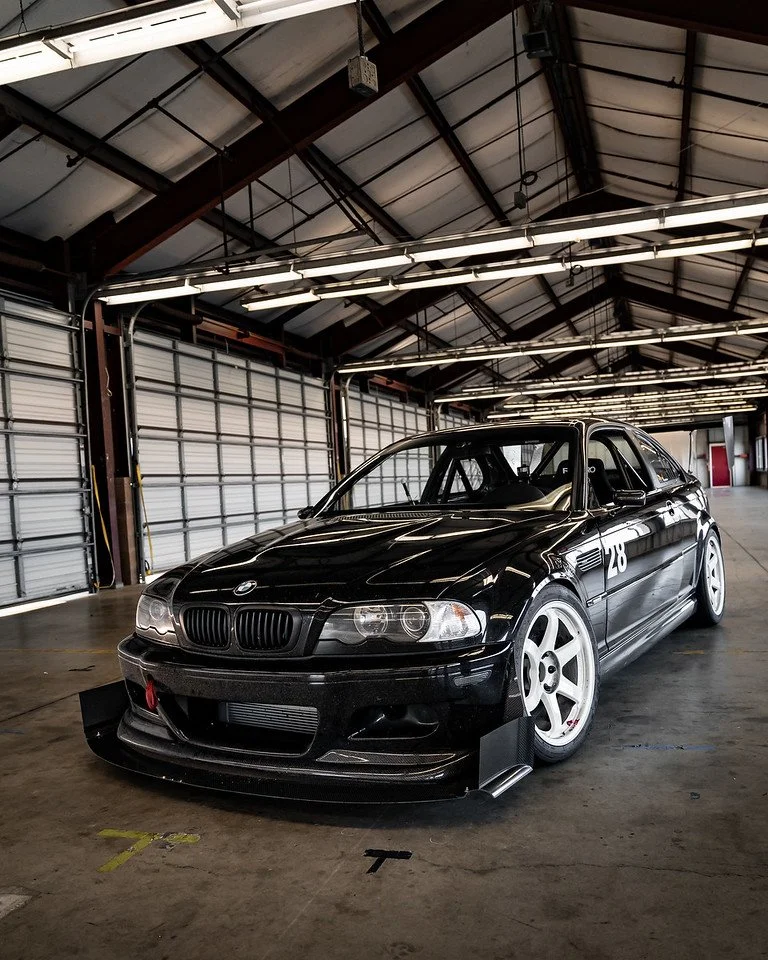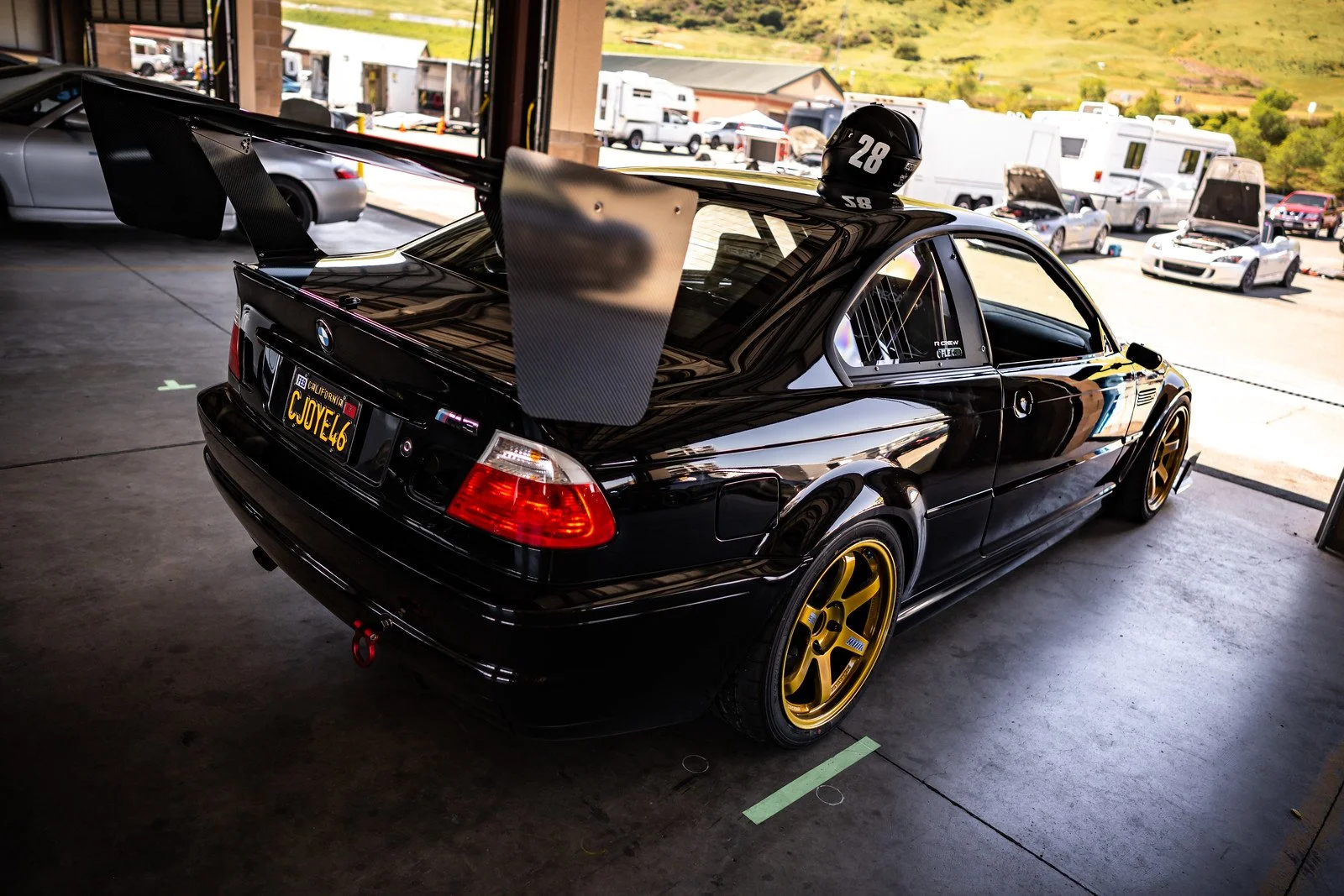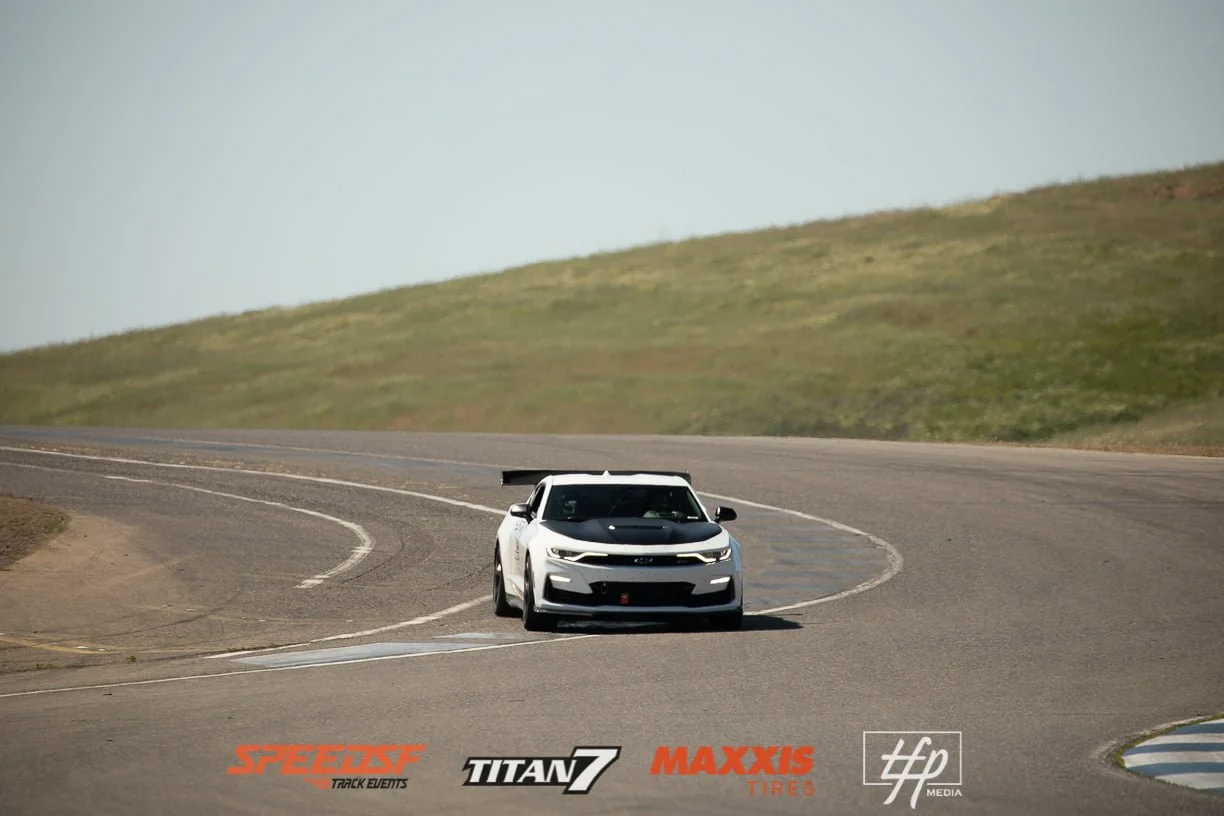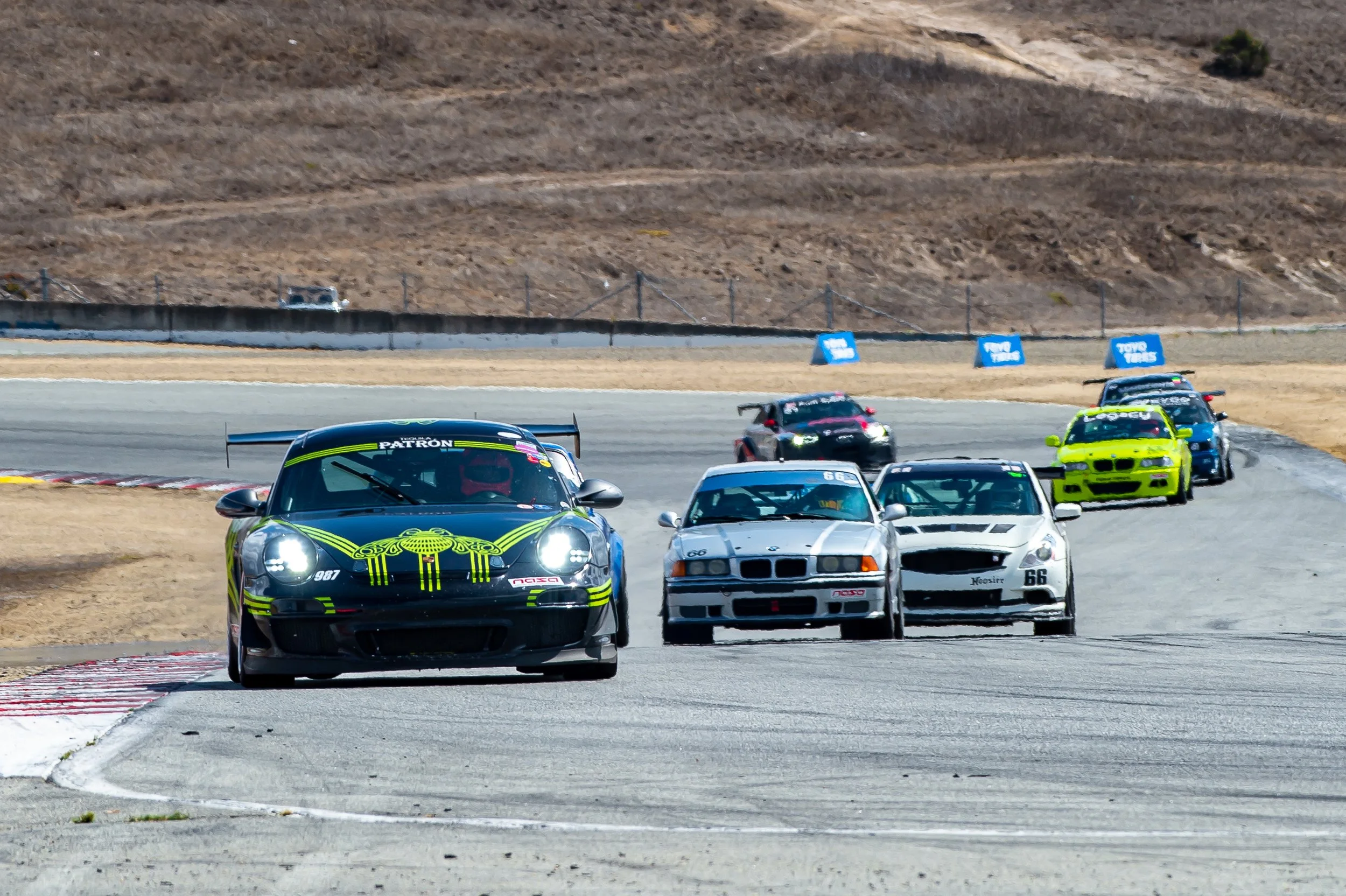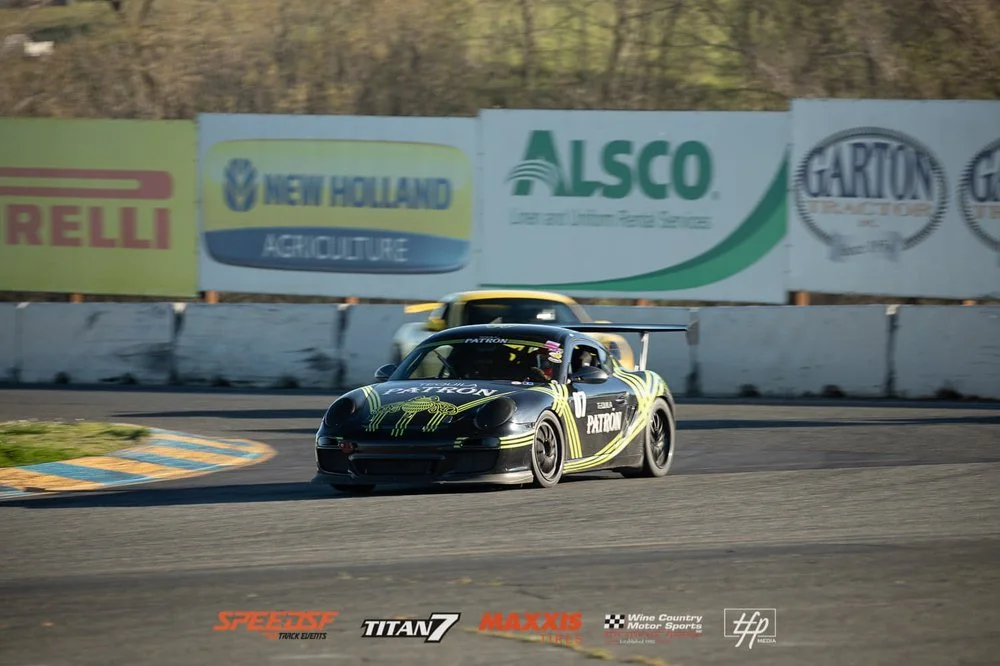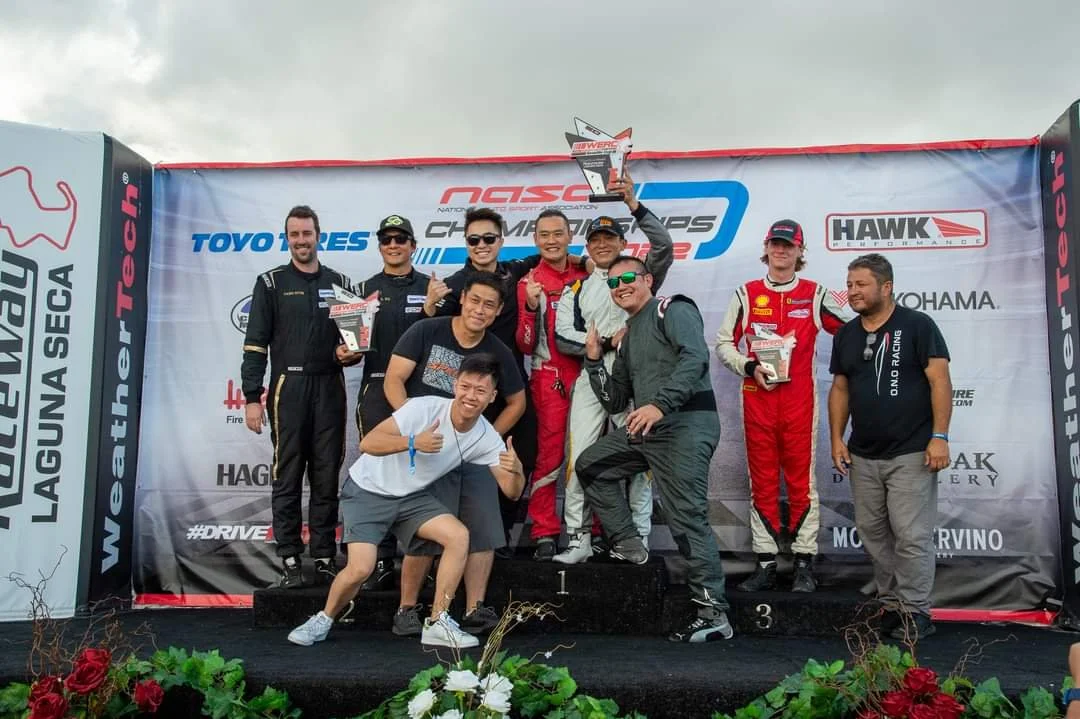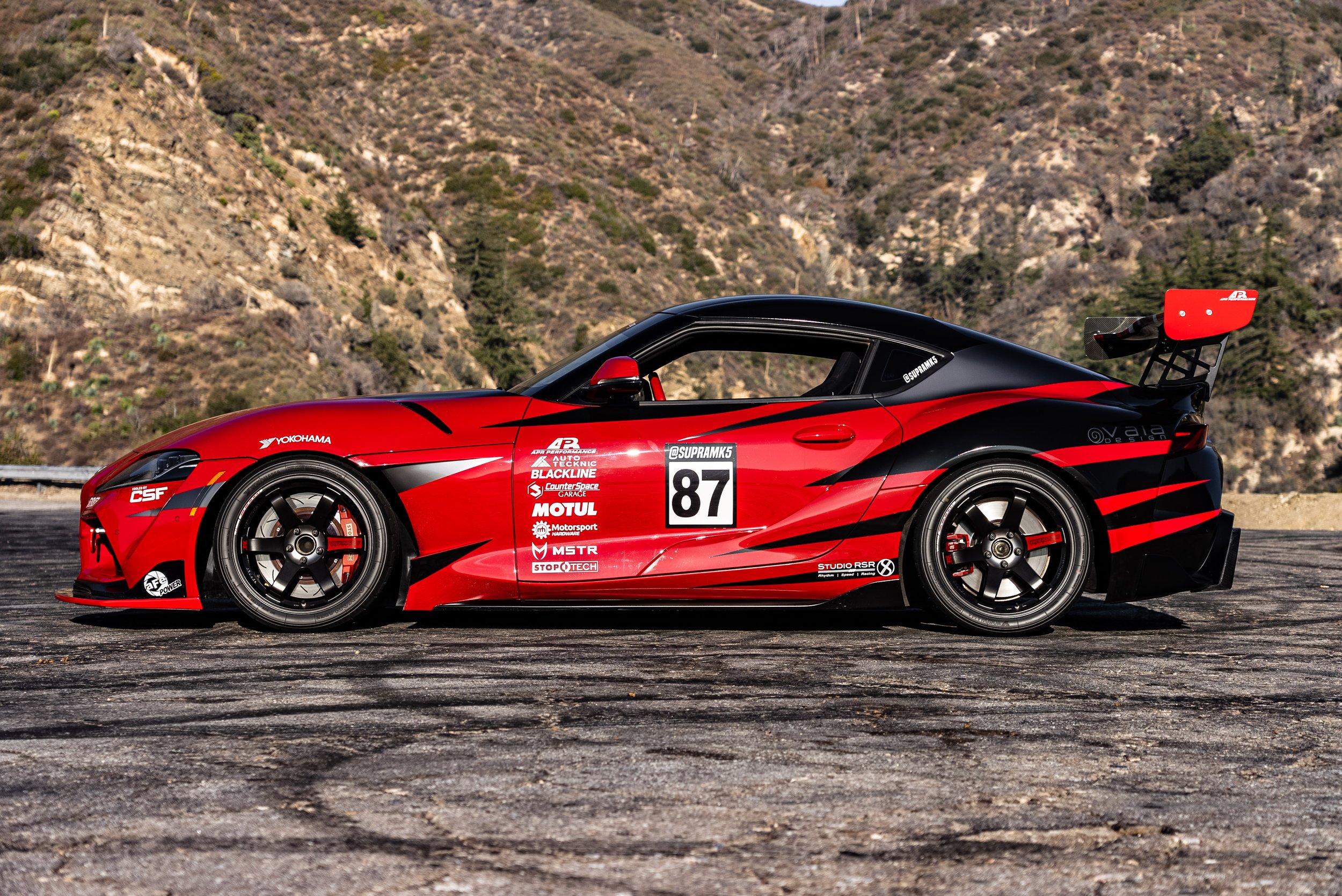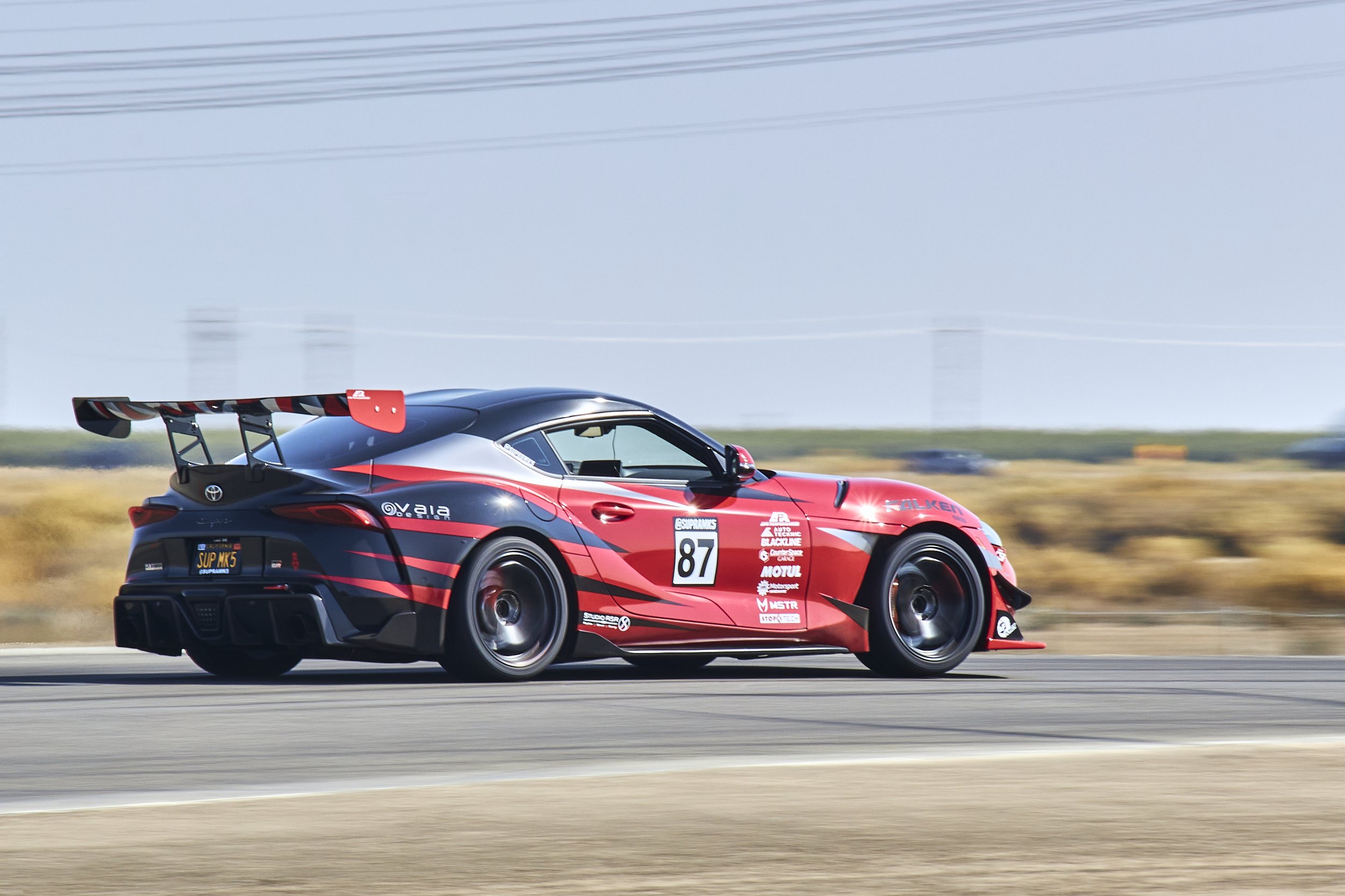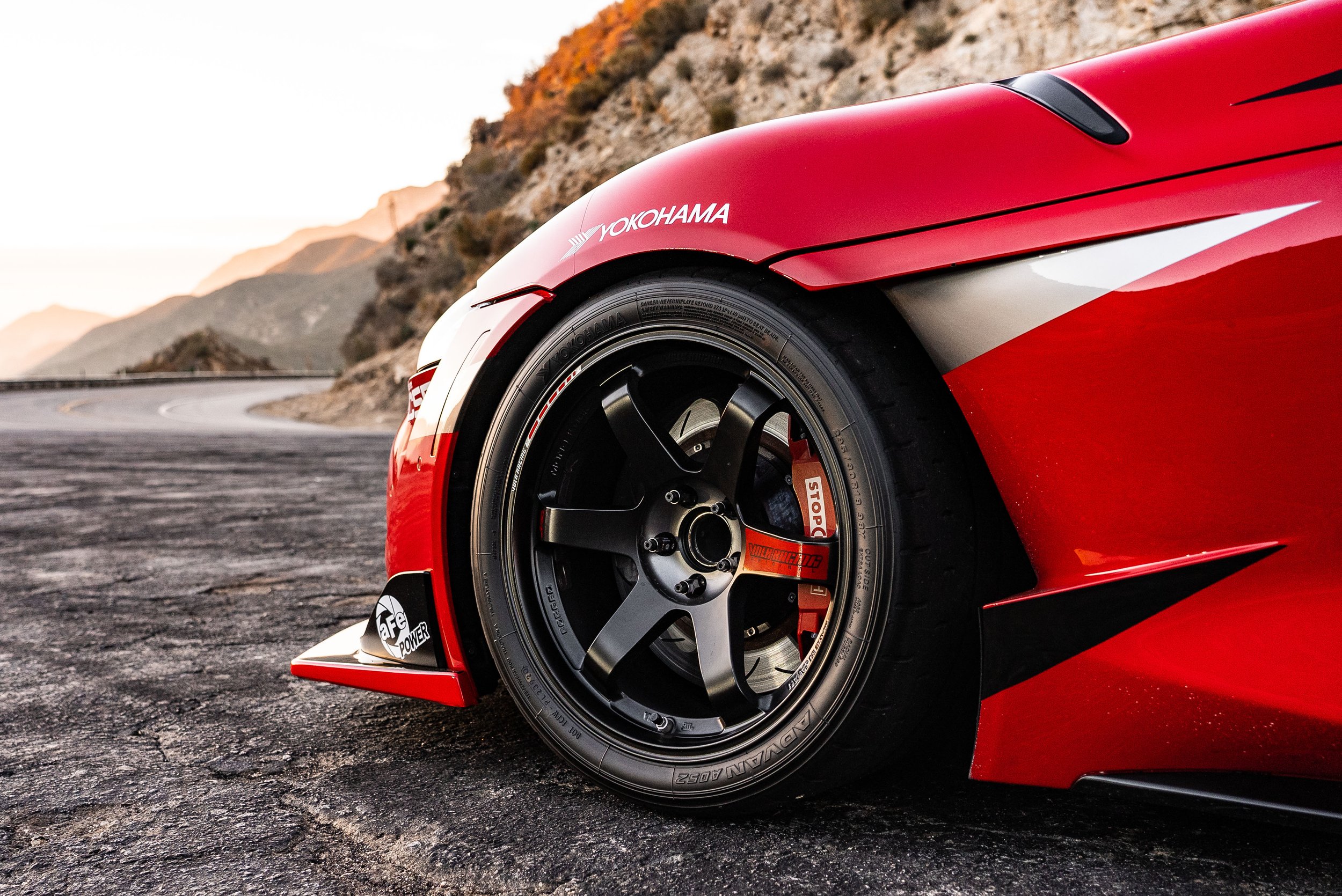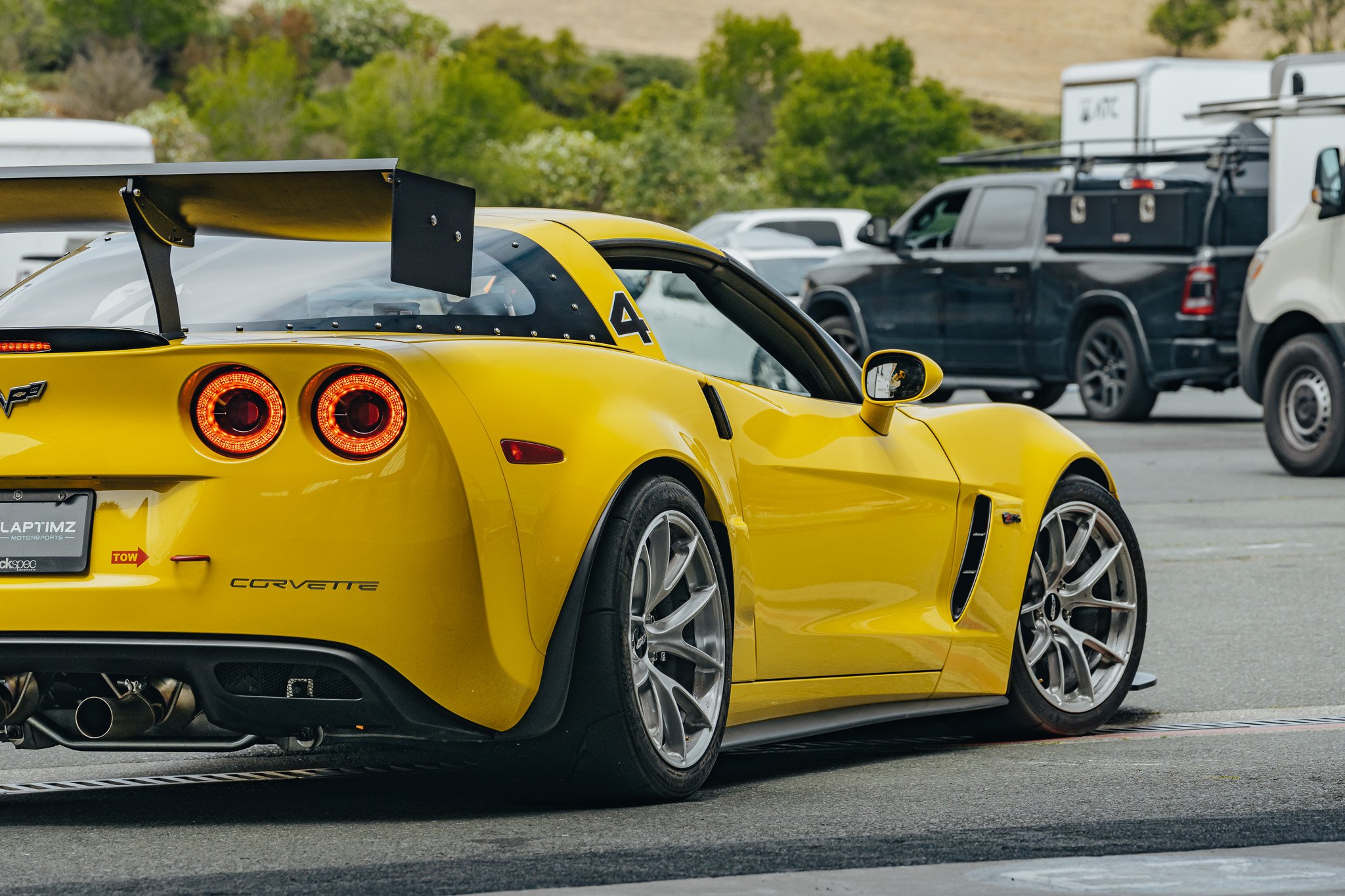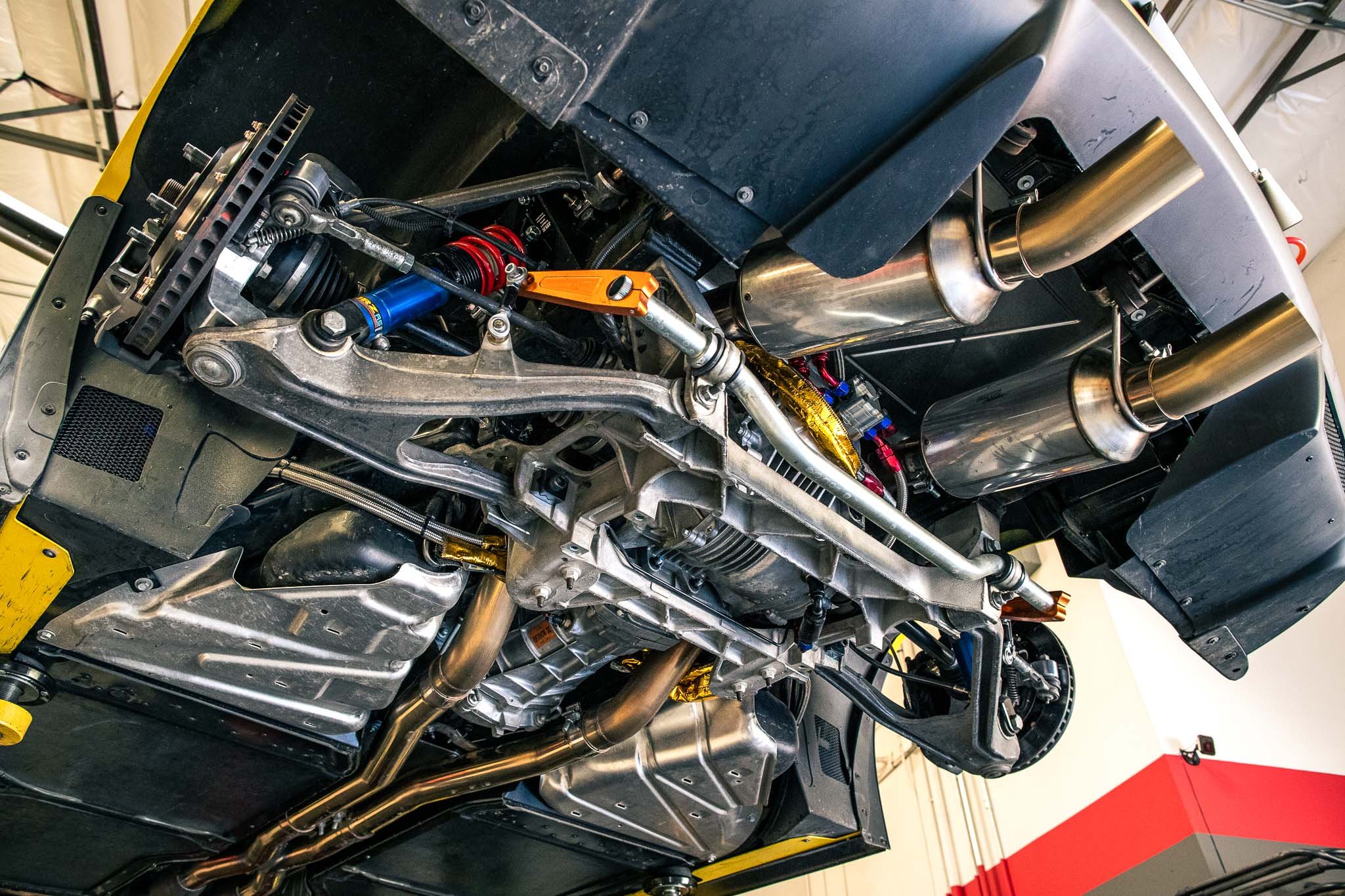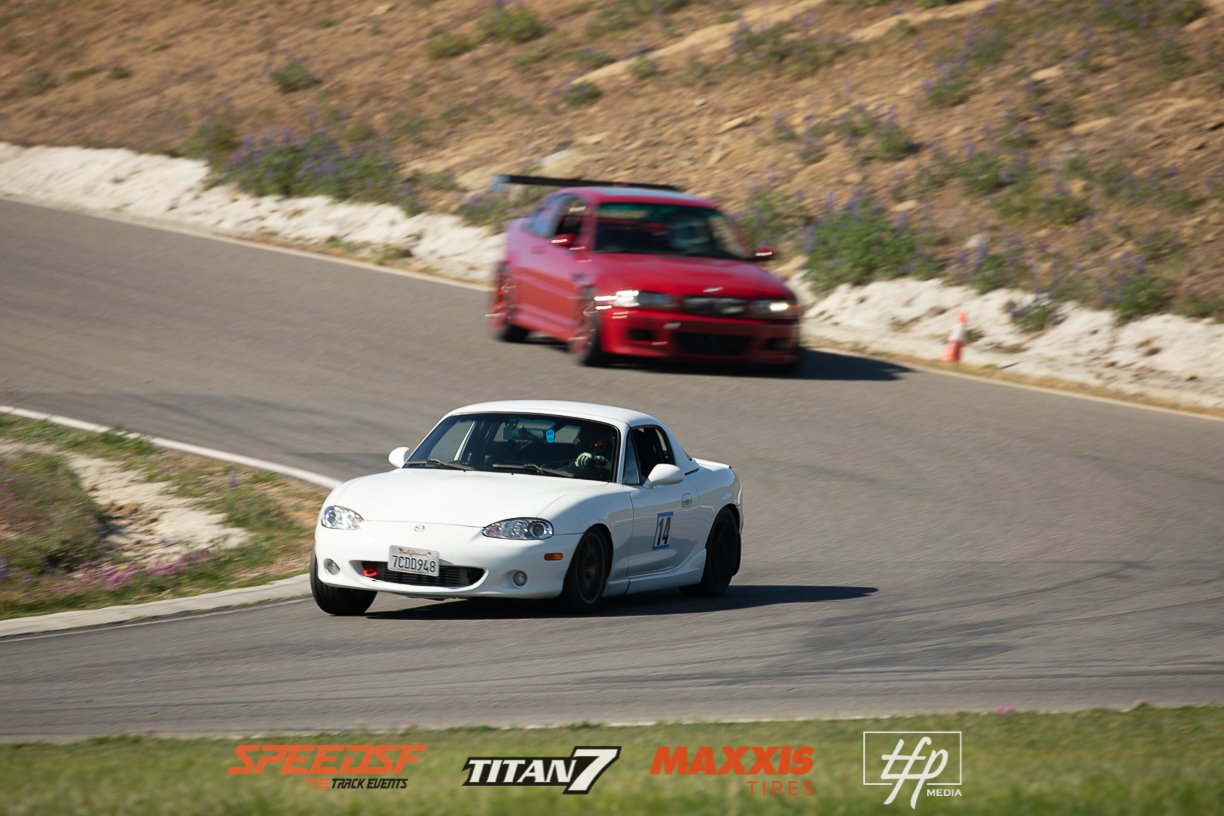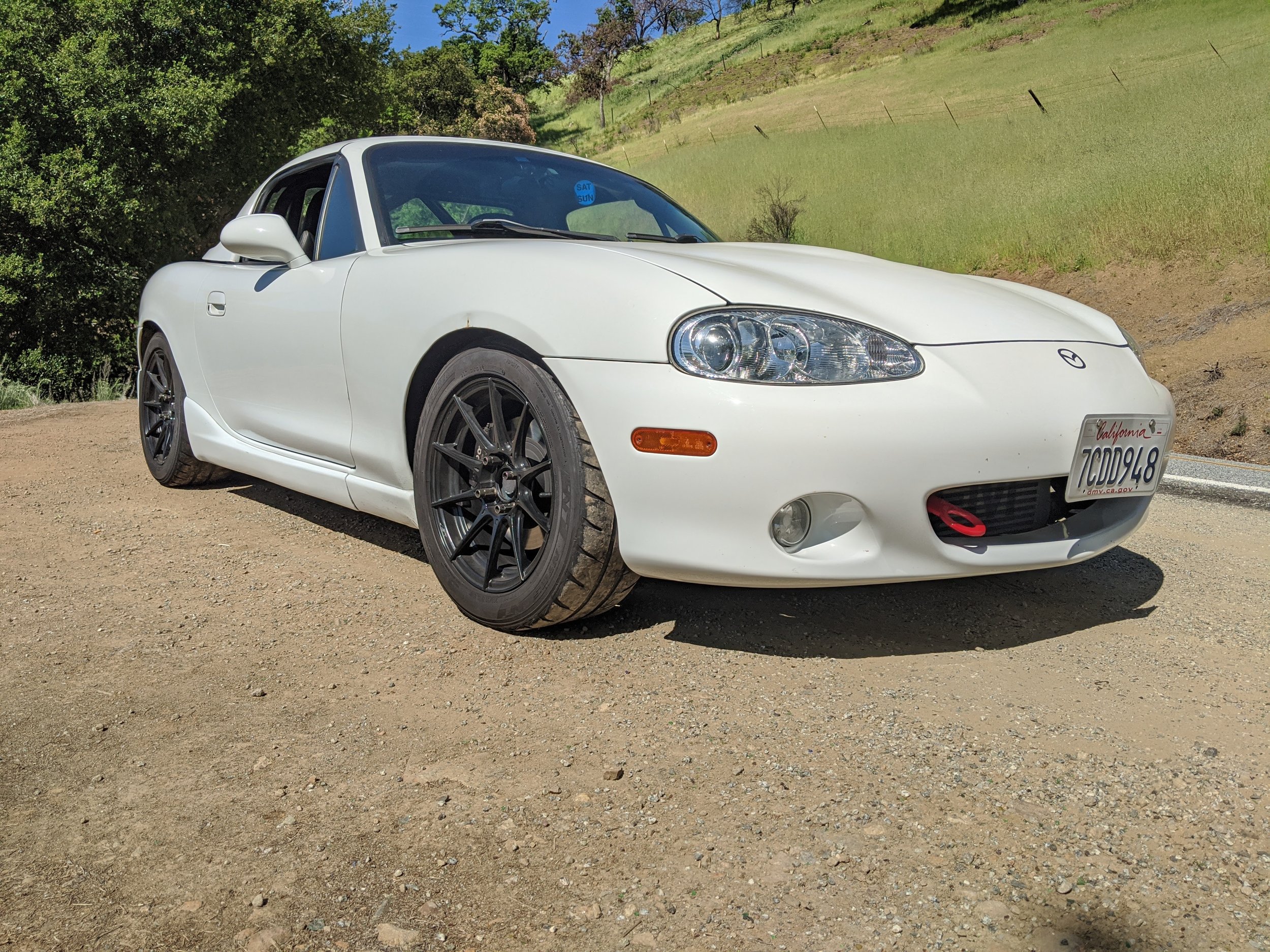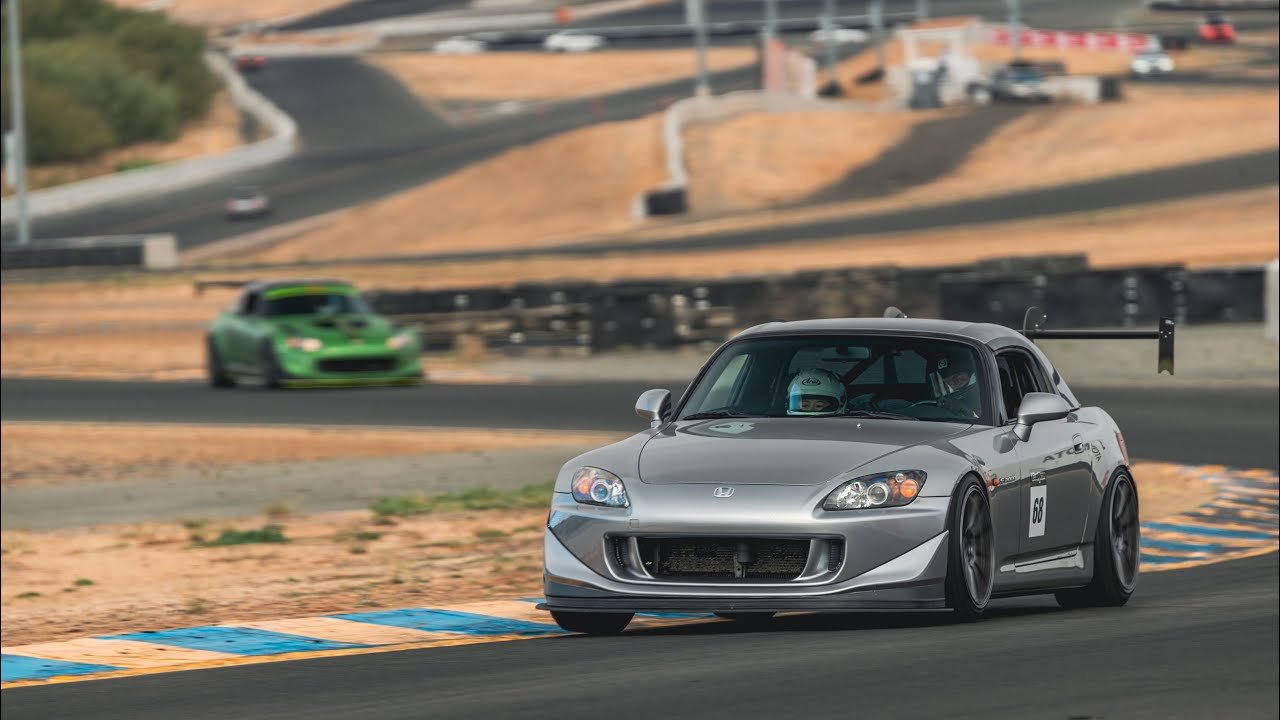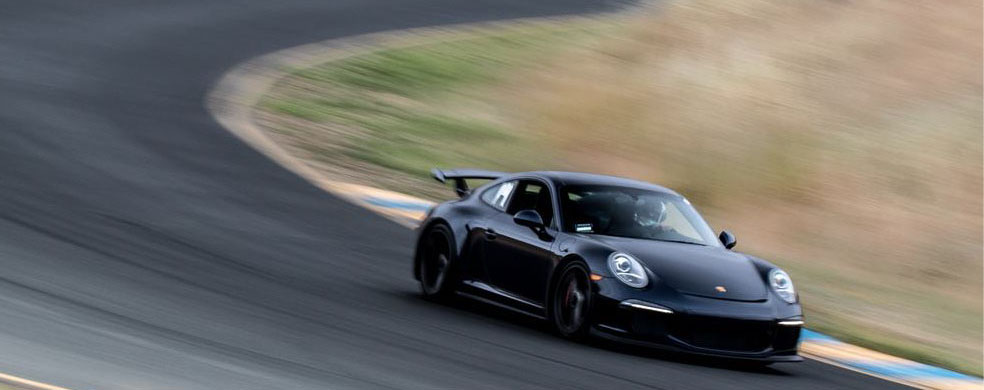
Alex's AP1 S2000: Earning His Spurs
Tempted to try something livelier than his DC1, Alex bought himself an AP1 S2000 a few years back and learned how lively it really was. He chose his modifications with the aim of making it reliable and predictable, and in doing so, built a foundation upon which he could learn his craft.
Though this AP1 wasn’t Alex Caruso’s first track car, it was the car with which he truly earned his spurs. A few years before buying this car, he got his feet wet with an NA Miata, then later an Integra GSR. Thesef two taught him about car control and patience with the right foot, but they lost their appeal with time. Eventually, he wanted to try something a bit more exhilarating. By then, Alex was no longer a student just scraping by, and he had a little more to spend on a special sort of car.
When this car popped up in his feed, he immediately checked his bank balance. Hardtop, great paint, totally stock, and basically a blank slate with which he could express his creative streak. There was one problem, though: he couldn’t quite afford it. Undeterred, Alex committed to finding the money. With the help of his supportive wife, he scraped together enough for a down payment and brought it home.
Not long after, he started leafing through those old lists of dream parts he’d scrawled away when he was a daydreaming, broke college kid. The first round of mods were intended to make the motor indestructible. Because the ‘01 models didn’t receive the piston-cooling oil squirters the following year’s motor did, he retrofitted those to fit his motor, careful not to crossthread anything down there. Following that, he added AP2 valve retainers, then sent his valve covers out to be drilled; the AP1’s valve covers need to be perforated to help move some of the blowby.
Though these drilled valve covers works with the stock PCV system, Alex added a catch can—one which doesn’t need emptying until the fifth track day.
With the powertrain bulletproofed, he started running his car to the 9,000-rpm redline and enjoying the honeymoon phase, spins and all. The AP1’s nervousness was thrilling, challenging, and hugely educational—even if he had to clean plenty of grass out of his wheel wells. “Once I started pushing, I looped that thing so many times,” he laughed.
Though AP1’s dynamic toe curve kept him busy and certainly accelerated his steering corrections, he felt it prevented him from totally trusting the rear. “It almost felt like the rear was taking two sets in every corner,” he explained. In an attempt to get closer to his car and predict its movements better, he started with the second round of improvements.
Wisely, Alex went for a full set of Blacktrax sphericals, Hard Race motor mounts, and solid LSD collars. The added responsiveness and transparency of the car grew in proportion to his confidence. However, there was one glaring shortcoming he still hadn’t addressed.
That pesky toe curve could only be truly changed by swapping out the old AP1 subframe for an AP2 subframe. The first weekend out, the car was predictable and encouraging in a way Alex had never felt before, and so the second honeymoon phase began.
Never once in his four-year relationship with the car has he felt bored with the car, but he has always wondered if the wear items would let him down. To give him peace of mind, he reinforced the flimsy spot where the front upper control arm connects with the chassis. While at it, he swapped all four hubs out for Karcepts items and rid himself of another potential nightmare.
Finally, after a year of tracking his stout and predictable AP1, he started searching for more speed. The first round of go-fast goodies consisted of Sake Bomb Garage’s brake kit, a set of JRZ RS Pros, and a few engine bolt-ons—the last chosen mainly for noise.
“The coilovers really transformed the way the car handles over rough or uneven pavement. I knew the stock suspension was already well-tuned by Honda, so I didn't want to skimp on coilovers that would ruin the handling characteristics the Honda engineers worked so hard to develop. After popping my right rear upper ball joint out of its control arm coming at Laguna Seca, I knew wanted to get something that could control the chassis better without bottoming out as frequently or harshly.
I happened to make a connection with a JRZ vendor and scored a deal on a set of RS Pros. Now, not only is weight transfer much more immediate, I don't have a second thought about the car unsettling over bumps, like the Dorito at Thunderhill West. Having two-way adjustable coilovers also opens up a whole new world of suspension tuning that I'm slowly learning about. The ability to adjust the handling balance at the track and the peace of mind that the dampers will soak up any bumps I throw at them make these coilovers worth their weight in gold.”
The focus on the foundation, the time spent learning an imperfect car, and the carefully chosen selection of performance modifications all paid off in the first session following. Running on the same set of Hankook RS4s he’d used the time before, he dropped his times at Thunderhill West by two seconds.
There’s not much more this dependable car needs. It’s lively, reassuring, and while it’s not the punchiest car in the field, it is one of the most agile. Because he prioritized predictability and transparency over any other performance trait, he might opt for an aftermarket differential—Seigo Ma’s shown him how important they are. Maybe a little aero in there for good measure, but beyond that, all he needs is good weather and the time to spend with his second love.
“With how much I’d dreamed about this car before buying it, I was worried that I would be disappointed with the S2000, but I can safely say it's lived up to all of my expectations and then some. It's been rewarding to work on, to fix, to push myself with, and it's the exact tool I needed to get comfortable on track.”
Werkshop's Paint Protection Film Keeps Track Cars Sparkling
With Werkshop’s PPF, you can spend a few shekels to keep your car looking sexy. Full-body, front end-only, bumpers, basic cars, and even exotics are covered.
Oil, rubber, dirt, and miscellaneous debris can quickly wear down your car’s coat, and not everyone is thrilled with the patina of a well-used track missile.
Track Car Tarnish
Nate bought his S2000 in showroom condition, then promptly pockmarked his bumper through a couple years of autocrossing. When he tried to scrub the conerash off, his cloth started taking paint along with it. That scared him from attempting any real fix.
He held off on solving the issue until a year later, when the front bumper was now sandblasted from running in close confines with messy cars at Speed SF track events.
After respraying his bumper, he realized he wanted to keep the car looking as fresh as possible, so he consulted with Wyman at Werkshop.
Wyman uses SunTek® PPF Ultra to keep his customer’s cars clean. A durable, nearly invisible, self-healing top coat smoothens out blemishes with heat from the vehicle or the sun. The coated portion remains soft and smooth to the touch—in fact, its finish is noticeably slicker than that of most factory paints.
After ten events, the car remains immaculate.
“I’m comfy parking this up someone’s behind on track and I don’t worry about the paint at all,” Nate noted. The little stuff which sticks after the end of a session is now easily wiped off.
Exotics Too
There’s real dollar value in preserving paint—especially with an exotic. After the owner of a McLaren 600LT put two years of track miles on his car, the once brilliant, glossy black had been rendered nearly matte by debris and damage from the elements.
Paint correction was the first step in revitalizing this supercar. The second was bringing it to Werkshop to get a layer of paint protection film applied over the angular front.
For this style of vehicle, Wyman starts with a computer-cut film designed to adhere to the specific contours of the McLarens angular face.
Werkshop’s PPF gave the scissor-doored supercar a new lease on life.
While this shape is provided to him by the film manufacturer, Wyman takes the original pattern file and makes slight improvements using Core software—improvements he’s learned from decades of wrapping experience. “I try to enhance the shape slightly to hide the seams and improve overall coverage,” he added.
The McLaren’s job was performed in the pre-cut fashion due to the complicated shape of the car’s angular face. For broader, flatter, simpler shapes—as well as entire bodies—Wyman tends to use the hand-cut method. This is, as you might imagine, a more simplistic approach which involves a large roll of the material cut specifically to adhere to a large-faced shape.
Smaller jobs and simpler shapes take less time. For a basic frontal covering, expect it to take two days. For a full-sized car or truck, as much as two weeks is needed.
In the event of a big job, Wyman includes a free inspection two weeks following the fitting of the film. After a wash, the film is assessed and any imperfections are fixed.
Setting the car up for a long protected life is evident much later. The remainder of the McLaren’s body wasn’t protected. Over the following year, the car was regularly tracked and the result was predictable. While the covered nose remained pristine and had weathered the elements well, the rest of the car’s exterior had taken a noticeable beating by the sun, pollution, and the occasional flying rock.
1317 N Carolan Ave, Burlingame, CA 94010
(650) 588-8384
Fenton's BRZ: The Dependable Workhorse
Rather than go for the all-out track car, Fenton decided a more versatile vehicle would better suit his current needs. After making only a few modifications, he’s been able to enjoy a nice balance of reliability, daily comfort, excitement, and on-track competence.
He had started his quest for the perfect street-track hybrid with high standards. The tactile response of his first S2000—yes, even with vaguer steering—had Fenton smitten with raw cars that bristled with energy and urgency. Then there were a couple Porsches—a pair that taught him about all the bliss and all the frustration that comes with owning a German sports car pushing two decades. He’d set out to try and get something supercharged with emotion, but later realized that there’s usually a high price to pay for that sort of zing.
As time went on and his priorities changed, he realized that it might make sense to try something new. He didn’t want to give up on his quest for a usable sports car, but he was willing to accept that a warranty and back seats meant just as much as speed and immersion. It could be quick and capable, and even if it didn’t have that undiluted feel that some of his older cars did, the compromise would be better for what he, a casual track day driver with a need for a practical daily, was looking for.
Versatility: A Sign of Experience
His search for a great all-rounder coincided with the release of the second-generation BRZ. It seemed like fate: more torque, more room than his S2000, and a warranty that granted him some peace of mind, it seemed to have most of what he was after. The rash of outrageous markups had him calling dealers within a thousand-mile radius to find someone who wouldn’t gouge him. A few days later, he booked a flight to Oregon and made one his own.
It looked fast in World Rally Blue, and fitted with a six-speed as well as an LSD, it had all the performance options he wanted for track duty. However, its real-world usability still had to be determined. Fortunately, he had an 800-mile trek back to the Bay Area to fully experience that side of the new BRZ.
Civilized, Capable, Comfortable
His trek along the coast only confirmed his suspicions: the BRZ was an excellent road car with the sort of manners one wants from something they’ll spend their morning commute in.
“Visibility is excellent—far better than my Porsches or an S2000 with the top up. NVH can be a bit high on freeway journeys, but that's the price you pay with a 2,800-pound car. Even so, it beats my previous cars and the older BRZ in that respect.”
Because of its good ergonomics and easy ingress/egress, it doesn’t morph into an iron maiden during long distance drives or irritating hours in traffic.
“The seat has plenty of lateral bolstering for the torso, but not quite enough to secure my thighs when driving fast. That’s not ideal for the track, but it does make the seat easier to get in and out of. For now, I don’t have any plans to get a bucket seat.”
“The steering is telescopic and height adjustable. The steering feel is not anywhere as good as my 997.1’s, but it is quite good. I’d rate it a 7/10; as far as electric racks go, it has a good amount of weight and feedback, it’s not vague around the center, and it’s fast. It only takes a tiny bit of steering input and the car darts.”
There’s also real headroom and enough space in the footwell to keep his legs from cramping. For a man of average height and build, the second-gen’s cabin is a genuinely comfortable place to sit for extended periods—even some of his taller friends agree with this.
Performance Pickup
If the new BRZ has something which helps both its real-world versatility and its on-track performance, it’s the increase in displacement over its predecessor.
“From a performance standpoint, the second-gen is better in every way than the first-gen. The torque dip is not a significant problem, it doesn’t feel underpowered.
True, it doesn’t sing at the top end like an F20/22 will, it doesn’t have the same narrow powerband. The FA24 makes good torque from 3,500 revs and just barely plateaus past 7,000 rpm. “Actually, it’s a pretty rev-happy engine. It isn’t electric at the top of the rev range, but it likes to be revved out,” he adds.
Fortunately, the BRZ’s famously wonky throttle response is less noticeable on track. At speed, it feels linear and natural.
Mostly Unmolested
While it’s fun and focused enough in stock form to provide real pleasure on the track, Fenton wouldn’t be doing his fanbase much good if he left it totally factory. However, as this car is meant to be more dependable and economical than it is fast, he’s shaped some of his tuning approach around cost savings and reliability to ensure his weekends go smoothly. No matter how quick and engaging it could be, it’s more important that it’s running on Monday morning when he needs to start his commute.
He put reliability first—just the bare minimum. To keep the car happy during a ten-lap session, he had to first address the car’s oiling issues. “An oil cooler is an absolute must—the OEM cooler is useless,” he added. It required a little custom bracketry, but his Colorfittings aftermarket cooler went in easily.
The OE oil isn’t really up to track demands and needs to be flushed—a realization he had after trying one track day with it. The factory 0W20 spilled out thick, black, and opaque. Thankfully, it’s not a picky car which only sips the finest; he skipped the primo Motul oil and settled on the more accessible Pennzoil Platinum 5W30.
However, the good stuff is circulating through much of the drivetrain. Fenton flushed the OEM diff and transmission fluids and replaced them with Motul 75W90. Better heat resistance, reduced wear and tear, and improved peace of mind.
Only Minor Modification Needed
After ditching the stock pads for a set of Raybestos ST45s, he addressed some shortcomings in the factory suspension. The most significant handling benefit as of yet comes from a little more camber. Just upper and lower bolts helped him achieve -2.6 degrees of camber and only set him back sixty bucks.
An affordable set of Enkei TS10 wheels have allowed him to bump up his tire sizes without stretching his limited budget. “I don’t care if anything happens to them—it’s nice having a disposable/expendable wheel and hop the curbs carelessly,” he adds.
Currently, he’s been tweaking a set of prototype Annex Clubspec Pro coilovers—and his car is the test mule. Most importantly, the car has to be comfortable. Both he and Annex have been searching for a spring rate that suits daily driving.
Why it Works
Despite its imperfection and its semi-compromised nature, the second-gen BRZ still delivers on the track—though Fenton has adopted a new philosophy when it comes to thrashing this car.
“I definitely get a buzz from its handling and all the options it gives me. If I want to get the car to step out mid-corner, it only takes a stab of the throttle. You can throttle steer the car in most corners with medium-grip tires,” he relays happily.
“If I get a drift just right, it pays off and I’m pleased. However, I’m never dying to wind the engine out or double-downshift to get that perfect gear change like I am with the S2000. With the BRZ, it’s only exciting at the very limit.”
“When I want an emotional drive, I take my NSX out. Even sitting in that car at a stop light evokes some feeling. The BRZ may not get my heart pumping in the same way, but it is the reliable workhorse that’s happy to be abused—or just used like a conventional commuter car.
Not having to lift the hood often compensates for any lack of excitement.
In the Under-$40,000 category, it might be the best dual-purpose car I know of—as long as you don’t need big back seats. Still, the storage space is decent. You can fit a whole set of wheels and tires in the back—that’s something I never could do with my S2000.
“For me, this car is a tool—it’s not an emotional object. As long as it helps me become a faster driver and gets me to work comfortably, then it’s served its purpose.”
Parts List
OEM Subaru crash bolts. OPC adjustable lower bolts, Annex Clubspec Pro Coils one-way adjustable 5/6K F/R
Enkei TS10 wheels 17x8” with Kumho V730 tires
Castrol SRF fluid, Raybestos ST45 front pads, Powerstop rear pads.
AWE full touring exhaust
James Snell's Supercharged S2000: Bold is Better
Not only did James Snell build himself into a handy driver in just a few years, he made this car—now supercharged—one of the cleanest all-round S2000 track toys in the SoCal scene.
Four years ago, James hadn’t even considered tracking a car. Though he was definitely a dedicated gearhead, he preferred lowriders and rock crawlers, mainly. Some of his friends had taken the track day plunge, however, and a few of them were adamant he branch out a bit.One Saturday morning, he drove out to Streets of Willow with a few eager buddies and everything changed.
The giddiest of his friends also had good taste; he brought his S2000 along and threw James the keys. He also had trust and good manners—he only asked that James bring it back in one piece. The casual introduction had clearly had an effect, because, just one month later, James had bought one for himself.
Good Hands
It was no ordinary S2000, either. This AP1 was previously owned by a Ballade Sports employee, so it’d been given lots of love and attention. Along with some choice body modifications, it came fitted with KW V3s, a square set of RPF1s, an exhaust, an intake, a halo-style seat, and an F22C motor with roughly 40,000 miles. For someone dipping their toes in the water, James couldn’t have been luckier—the price he picked this one up for would irritate a lot of prospective buyers these days.
The car came with an OEM AP2 front bumper and CR lip, a replica CR trunk wing, and a full carbon hardtop weighing only seventeen pounds.
As nicely sorted as this example was, the AP1 is not a forgiving car. “The first few times I drove it, I probably spent more time spun off-track than I was on-track, but I didn’t care. I set a 2:14 at Buttonwillow 13CW and I felt like a rock star. I may’ve been going off a few times every event, but—and I can’t stress this enough—I was having the time of my life.”
“My motto then was: ‘If you’re not spinning, you’re not trying.”
However, he adapted rapidly. “Smooth is fast in that car. The more I softened my inputs, the better the car responded. My lap times fell, and I set my sights on a pretty significant goal early on. The aim was to set a Buttonwillow 13CW lap under two minutes on 200TW tires without the help of any aero.”
As James learned, trimming the first few seconds is easy. Three years passed before he was able to whittle his times down to something nearing his goal, but he didn’t care too much. Again, the thrill of driving and learning the nuances of the S2000 were the wind in his sails.
One of his biggest hurdles with the car was learning how to gel with its nervous behavior. “I was usually leaving some on the table because the rear was on a knife edge,” he said. It would give him the willies when the S2000 would rotate at higher speeds, but James realized that he had to suppress his instinct to lift his right foot. Backing out in that situation doesn’t always work well in this very pointy car.
After getting enough experience with the car’s edginess at higher speeds, he returned to Buttonwillow on a set of A052s which were well past their prime. Even after spinning the car six times, he didn’t falter. That day, he was determined to find those last few tenths.
When he saw a 1:59.7 appear on his AiM Solo, he whooped. “I went from setting a 2:14 in the same car, essentially. Sure, I moved from a Nexen to an Advan, but the car was identical otherwise. That gave me the permission, if you like, to take the next big step with this car.”
Forget Incremental Improvements
At this point, James was nearing his sixtieth track day in the car. To give it a commemorative special touch, he decided to douse it in a shade of green most often seen on Porsches. “I’d wanted a GT3 RS in Lizard Green, but I couldn’t justify the cost—I could buy a duplex for that money.”
Getting the professionals to paint it that color wasn’t cheap, either. Instead of forking out enough to buy two new motors, he set up a makeshift paint booth in his garage, studied YouTube, spent a thousand in materials, and gave it a whirl.
Not surprisingly for a car with such battle-worn exterior, prep took far longer than anything else. So much of the original panels were beaten beyond the point of sensible continuation. In the place of the old panels, he added J’s Racing front fenders and rear bumper, as well as a set of ASM rear over fenders. Over the course of four months, he spent three-hundred hours replacing panels, sanding, and swearing. The painting itself only took a few hours.
Then came a Voltex Swan Neck and a Racebred Components 3” front splitter. Along with the aero, he added a set of JRZ RS Pro coilovers and a Karcepts front sway bar which made a “night and day difference—it was almost a new car. I think the V3s were well past their prime, and I might’ve handicapped myself with those. When I finally got the right equipment, I immediately dropped my best at 13CW to a 1:55.7.”
Ready for Some Overdue Jam
The motor had been through the ringer and in July 2020, the motor dropped a valve. He spent the summer rebuilding another 2.2-liter Honda short block with a Port Flow Design cylinder head built by Tom Fujita. With Supertech dual springs, valves, and retainers, he’d be able to beat on it without worry. However, it was still lacking a little jam.
For that reason, he unsheathed his credit card one Black Friday and ordered an HKS GT2 Supercharger. That was the first of many modifications needed to double an F22C’s output.
With the guidance of Son Vo and FormulaS, the new engine package was fortified with a V-mount intercooler, plenty of ducting, 1300cc injectors, an AEM V2 ECU, and all the custom piping needed to keep the motor running cool.
Plans for a Forced Induction Future
The beauty of this supercharged motor is that it will remain as tractable as it was pre-blower, but with nearly twice the power at the top-end. Because of its linearity, it should be tractable, even with the stock differential.
To ensure over 400 horsepower is put to the pavement cleanly, he’s also widened the footprint a little with a set of Titan7 T-R10 wheels measuring 18X10.5”. Though he hasn’t settled on a specific tire, he’s thinking a square set of 295-section Hoosier A7s. Not only will the car put the power down, but it will stop in a fashion that might let him reuse his original braking points. Well, maybe.
“After seventy-five track days, I’m still ear-to-ear. Actually, I’m like a kid on Christmas the day before a track day. I purposely don’t drink caffeine from noon onwards so I can sleep. It doesn’t really work; I end up getting up at 3 AM and watching racing videos on YouTube until I leave.”
“What I’m looking forward to more than anything is that, once I pass Sunset, I’ll no longer feel like checking my e-mails.”
With the major drop in time he enjoyed after the last big step in modification, maybe his new goal of a 1:49 at CW13 is in the cards. Whether it is or isn’t, it’s certain that he’ll be grinning the whole way there.
First Impressions: 2023 GR Corolla
How does Toyota’s new hot hatch handle? We found out at Thunderhill.
A long and fruitful relationship with One Toyota of Oakland put Patrick Chio towards the front of the waiting list for the 2023 GR Corolla. Only 6,000 were made for this year, and at that dealership alone, the waiting list was 150 names-long.
As evidenced by the length of the hopeful would-be owners, the American market has been craving a true hot hatch from Toyota, and Patrick was fortunate enough to learn that the out-of-the-box performance more than justified the hype.
Though Patrick wanted the top-tier variant of this newest GR product, he could only get his hands on a “Core” base model within his preferred time frame. This particular car, finished in Ice Cap white, has none of the frills of the fancier versions, save for the optional Performance Pack and its Torsen limited-slip differentials front and rear.
In a paddock filled with supercars and winged track cars, the furor surrounded the subdued Corolla.
With very few visual cues to alert the observer, there’s really very little that sets this car apart from most econoboxes on the road nowadays. The bodyshape is ordinary, the exhaust is muted, and the absence of flashy badges and bright font won’t alert even well-trained eyes. Compared to the rally-inspired Evos and STIs of twenty years ago, it’s subtle. How times have changed.
Thirty years ago, “turbo” would’ve been pasted in bright colors across the side of the car.
A short wheelbase, 300 horsepower, a small turbo that spools immediately, and an adjustable chassis made its on-track foray at Thunderhill Cyclone exhilarating and impressive. It’s the last trait, its mid-corner adjustablilty, proved useful in long, tightening corners like Turn 2 and the direction change between Turns 5A and 6.
There’s only so much entry speed that can be expected from a stock alignment and OEM tires, but when the front axle was overloaded, all it required was a brief lift and the car would pivot in a progressive, predictable fashion.
Though a vehicle with such a short wheelbase would be expected to oversteer noticeably after such a throttle adjustment, the breakaway is very gradual and “more of a neutralization,” says Patrick. The car is soft-edged out of the box, but the potential for a very lively and pointy machine is clearly there. The combination agility and an ability to leap out of slow corners were what allowed Patrick to keep a decently driven AMG GTR within striking distance.
Of course, being a four-wheel drive car with a turbo, it helps to try and drive a different line which favors the corner-exit phase. Favoring a squarer line with a late, abrupt turn-in helps minimize the time spent loading the front axle. While this wears the rears a little faster, it does allow for a rapid exit without any front tire scrub slowing acceleration. With torque and traction in spades, it pays to prioritize the corner exit. Always play to your strengths.
For around $35,000, it seems like a bargain. It does have the shortcomings of most hatches—namely its build quality. Being a hot hatch, the suspension is not what most people would consider comfortable. “You feel every bump and surface feature on the road,” Patrick says. Thankfully, the supportive factory seats and comfortable ergonomics help soften that rough ride somewhat.
On the road, the 1.6-liter engine pulls like something three times its size from low revs. It is very usable on backroads and in city driving, but the small turbocharger runs out of puff at around 6,000 revs. For now, the shelf of mid-range torque—its 273 lb-ft are available between 3,000 and 5,500 revs—is appreciated exiting hairpins and while making mid-corner throttle adjustments.
The G16E-GTS engine makes 300 horsepower and 276 lb-ft of torque from just 1.6 liters. Not surprisingly, fuel economy is poor. “My C7 Z06 gets better consumption,” Patrick reported.
The motor stands to get a little tweaking in the coming months, though stateside aftermarket support is still limited. Some shops have already reported the factory ECU is crackable. That and a bigger turbo ought to provide a sufficient power bump until the rest of the country catches on with GR Corolla tuning, which will adopt some of the know-how tuners in the UK, Japan, and Australia have already used in their development of the GR Yaris. Considering the fervor surrounding the car, it shouldn’t take long.
Before the engine is touched, Patrick and Titan 7 will widen the footprint and improve the stance. Titan 7 has been working to spec a wheel for this new platform that both suits the car’s shape and fits nicely around the factory four-piston brakes.
Crucially, the tires can’t out-accelerate the engine development. “Even the stock tires were not giving up much,” Patrick acknowledged. The traction and poise offered by the factory 235s complement the power output and weight well. Because the stock tires aren’t easily overwhelmed by the factory power output or the weight, it makes sense not to get too big with the replacement rubber. Impressive considering the weight of the base Corolla with LSDs comes in at 3,262 pounds.
For the time being, a set stronger wheels, stickier 255-section tires, a few custom arms and bars, as well as a little weight reduction should help this long-anticipated Corolla squeeze into the position of supersleeper. If it leaves the factory with 100 horsepower per cylinder, makes good use of all that power, and handles the heat well, it has all the makings of something truly special.
Many thanks to One Toyota of Oakland for helping us acquire this vehicle and sparing us the outrageous markups that other dealers have tacked onto the Corolla’s cost.
Steven's McLaren 675LT: Hardly Fair Anymore
After hearing nothing but praise from his driving coach, Steven Melson decided he’d have to try a 675LT for himself. He flew out to COTA to test one, but that particular car was crashed minutes before he was supposed to hop in it. Undeterred, he sought out another and has been continually shocked at how capable this supercar is.
Four seconds faster. A whole four seconds faster after a couple sessions. That’s the amount of time Steven Melson cut off his previous best, set in a V10-powered R8, just after getting acquainted with his new car.
It was his coach who had been gushing about the McLarens he and his clients had been driving in recent months. Steven, though he hadn’t come close to purchasing a car of that caliber before, was beginning to wonder whether he should add one to his collection.
It took him over a year of maybes, mishaps, and genuine frustration—culminating in a trip to Texas to test one at COTA to get a feel before pulling the trigger. The car he was supposed to test, a Papaya Orange 675LT, was crashed by its owner just minutes before Steven was supposed to take it for a spin. Some would’ve given up on the idea then, but Steven’s coach had convinced him that one of these cars was worth holding out for.
A week later, the listing for another 675LT, this one finished in Chicane Grey, popped up in his inbox courtesy of a supportive friend. It didn’t take long before Steven made a decision.
At just 2,950 pounds, the 675LT is nearly a half-ton lighter than his Mercedes AMG GT and four hundred pounds lighter than his Audi R8 V10. Compared to the Audi, which now wears a set of Penske racing shocks, the McLaren is much more alert. “The weight difference is obvious,” Steven began.
Thanks to the carbon tub and the active suspension, the grip and lateral support is much better than the Audi’s, if maybe coming at the cost of a slightly duller feel. To improve matters, the McLaren’s quicker steering and sharper front end, as well as a more stable rear at higher speeds bolster Steven’s confidence and encourage him to push.
And its urgency is only part of its appeal. The power is savage, relentless, and genuinely shocking—I remember the first time I drove one, and I had to let out a few expletives after the boost hit. It can spin the wheels easily in third and sometimes fourth, yet the power is somehow controllable.
There aren’t many cars which will out-accelerate this surprisingly exploitable supercar.
Despite making the sort of power that few track cars can, the delivery is fairly linear and very controllable. “I don’t get the feeling of ‘Oh God, now the boost is on!’ Really, it’s not that intimidating,” he professed.
What does surprise him is the way which the McLaren decelerates. “The stopping power is amazing—so far beyond the Audi or the Mercedes. I’d usually overstep the mark in those two cars, but I haven’t found the limit yet in this. Every time I try to push the braking point later than what feels comfortable, it just stops,” he laughed.
And despite the systems providing him some form of safety net, the McLaren is exacting—so much so that he’s started augmenting a few mistakes the plusher, less demanding Mercedes let him get away with. “My coach told me to try and get back to the throttle earlier and earlier; it just takes it. In fact, it’s helped me work on my bad habit of coasting mid-corner,” he admitted. To get the rear settled early and softly has opened his eyes up to the dynamic differences between a hard-edged car like this and his relatively plush German machines he’d gotten used to.
To get a better sense of how these three differed, he took them all to the McLaren’s inaugural track day at the Thunderhill Bypass last December. After one day of familiarizing himself with the new car, Steven put in a searing lap of 1:51.5—four seconds faster than the best he’d managed in the Audi. That’s with an indicated 154 miles an hour on the front straight and a lot of mud on several parts of the track. If that’s not an indication of accessible speed, I’m not sure what is.
Being as quick as it is, he hasn’t really considered toying with the suspension much. He has, however, decided to extract a little more power from the M838 motor with a set of catless competition downpipes from Soul Performance and a tune from M-Engineering. On 100-octane fuel, these goodies should make another hundred wheel horsepower—another hundred wheel in a car which runs 10.3 in the quarter bone stock. “It’s probably all I’m gonna do for a while—I just wanna learn to drive it better, have fun, and beat some X records,” he admitted.
Sounds like a reasonable plan of action.
A Simple Guide to Driving in the Rain
It might intimidate some, but driving in the wet/low-grip conditions is one of the best ways to improve as a driver. Here are some simple tips to remember next time the heavens open on your track day.
Driving quickly in the rain is daunting for many. The chances of a spin certainly increase when the grip is drastically reduced, the challenges of finding the wet line leave some people scratching their heads, and the reduced visibility often keeps people from pushing as hard as they know they can.
However, these challenges are all surmountable with the correct approach. A little bit of theory, a soft touch at the wheel, and a willingness to learn can go a long way—not only in terms of improved car control, but also the ability to improvise in challenging conditions.
There are some things to bear in mind before setting out onto a wet or damp track. First and foremost, the careful driver should take a sighting lap to determine where there are puddles and standing water, where there are dry patches, and where they might be able to experiment with some induced oversteer or understeer safely—a slower corner with some runoff might be the place to get a feel for the car as it starts to slide without incurring much risk.
Finding the Wet Line
While the rubber deposited on the dry/conventional line will generally aid grip in dry conditions, it often has the effect of working against the driver. That deposit is rendered slick by the rain, and so it pays to avoid the conventional line as much as possible.
On a corner which rewards a standard out-in-out line in the dry, the line begins a car’s width or so inside the standard line so that braking begins off the polished and rubbered dry line. The turn-in point is usually a little past the dry turn-in point, as this is will allow you to avoid loading the car laterally on a polished part of the track.
It follows then that, through the middle of the corner, the wet line is usually located a car’s width or so to the outside of the dry line, though this varies pretty widely. Though this not the shortest path through the bend, the greater level of grip off the dry line more than compensates for traveling a longer distance.
Using the unused part of the track will offer better grip in the rain. Photo credit: Driver 61*: Blue—Wet line
With this setup, it’s clear that one will have to cross over the dry line—usually at the corner exit. To execute this phase well, it helps to try and have the car straightened as much as possible prior to crossing over the dry line—minimizing the lateral load on the car will help minimize wheelspin, which can severely limit corner-exit acceleration in wet conditions.
In order to “square off” the corner and take more of a “diamond line,” it helps to sacrifice a little mid-corner speed in order to make an earlier, sharper direction change. In other words, get the car pointed straight slightly before the track-out point. The net effect is a significant improvement on speed down the subsequent straightaway, which more than makes up for a mid-corner lull.
As if that weren’t challenging enough, the wet line isn’t exactly a fixed thing. As the rain subsides, returning to the dry line, or at least a hybrid of the two, might start to make sense. If you notice it getting wetter and rivers crossing over the circuit, you’d be wise to avoid them. Your feel for the grip available will determine how quickly you can find the ideal piece of real estate.
Straightening the car for the exit phase helps in low-grip situations. Photo credit: Driver 61*: Blue—Wet line
General Technique
Smoothness makes a much greater difference when the grip is drastically diminished. Because the car cannot be loaded as heavily, giving it a little more time to transfer its weight is crucial and will make the car’s handling much more predictable. This is easiest to implement when making steering inputs since throttle and brake inputs have their own little nuances that make them slightly more complicated.
In the rain, a mild amount of maintenance throttle will help settle the rear in longer, faster corners. Remember that this weight transfer to the rear must be done gently, but if off-throttle coasting is kept to minimum in the quicker bends, the car is less likely to surprise you.
Braking is fairly straightforward, but due to a lower level of grip, the rate of weight transfer must be slowed and the overall pressure should be reduced. Basically, apply the throttle a little more progressively than you would in the dry.
Assuming the tire compound works well in the wet, the braking distances might not be wildly different than they would be on a dry surface, but it’s wise to work up to the braking points a little more conservatively. Despite all this, it’s still far better to reach the threshold of lock-up or ABS intervention earlier in the braking zone since a little cadence braking can solve the problem. This is much easier to manage than carrying too much speed into the corner because of a tentative brake application.
Lastly, if there is an excessive amount of water on the track, your car might begin to hydroplane in places. If this happens, try to minimize your inputs. A light lift off the throttle may help stabilize the car, but make sure not to lift too abruptly, since you don’t want to send too much weight forward.
Don’t Forget the Basics
In most cases, windows can be closed during medium and heavy rain. In light rain and shower conditions, your windows must still stay open. Your car is not made out of paper—a little bit of water will not hurt your interior.
Bring some waterproof containers for your personal belongings. A little Rain-X or comparable product may help visibility.
There are some misconceptions about high performance summer tires suitability in wet conditions. In fact, many 200TW+ tires perform very well in the rain. Many race teams run extreme summer tires like the Maxxis VR1, Yokohama A052, and Bridgestone RE71RS.
If possible, soften your swaybars and damper settings. This will improve weight transfer and generate a little more grip. Also, reduce camber. Not only will the reduced grip prevent the tire from leaning as much as it would in the dry, but maintaining dry camber settings in the rain might cause the car to rotate a little too willingly in the wet. The right sort of camber settings which cause the car to understeer at the limit will help inspire more confidence in the wet.
Finally, increase your tire pressure. It’s tougher to get them up to operating temperatures in the rain, and a stiffer sidewall can help cut through the water.
With that, there’s not much more to say. Sensitivity trumps bravery in the rain, and every top-tier driver understands how to soften their touch and scan a sodden surface for differences in grip. With a little seat time and some careful experimentation, driving in the rain will not only improve your confidence and resilience, but it will strengthen your driving skills in ways which aren’t obvious to the onlooker.
References
Driver61—Circuit Driving in the Rain
Joey's Yaris: Giving the Family Car a New Lease on Life
It was the car he and his siblings learned to drive in. Once all the kids were off on their own, Joey decided to give this once-automatic Yaris a shot at sexier second life.
Joey Rassool was bitten by the racing bug quickly after buying an FR-S a few years ago. Being a deep thinker and someone who never does anything by half-measures, he decided to take an abrupt left turn. Not everyone would see the sense in making the FR-S his daily and the automatic Toyota Yaris the track tool, but he had his reasons.
“I recognized the reality of modifying a car extensively—something I really wanted to do—and so I figured I’d keep the FR-S untouched. I had the family Yaris to play with, and since my siblings were done with it—it was a first car for most of us—I wanted to give it a new lease on life.”
It wasn’t convenience alone that drove Joey to choose the Yaris. After watching an SCCA H-Production race at 2014 Runoffs, he saw that this underrated econocar had real racing potential. So, without much hesitation, he and his brother Sam started modifying the Yaris for autocross. Tein coilovers, 15x8” Konig Hexagram wheels, 205-section Hankook RS4 tires, and a set of Hawk HPS pads were all it needed. A mild dent in the wallet later, they had a machine that would rotate better than most.
If there was one thing holding them back on the cone courses, it was the Yaris’ automatic transmission. Over the winter of 2019, he and Sam threw in a five-speed with an ACT clutch, and while the subframe was removed, they added stainless steel brake lines and new control arm bushings. Sadly, the fruits of their labor wouldn’t be enjoyed for another year.
Cheap seats, sticky tires, and a few bolt-ons were all this featherweight needed.
When COVID died down at the beginning of 2021 and they could finally get back on the track, they took it to the Streets of Willow, where the nose-heavy Yaris revealed a few of its flaws. “I really wasn’t familiar with how it would transfer its weight,” Joey began. It’s not hard to understand why the little Toyota was too happy to spin in the first chicane on the second lap.
“I really hadn’t changed much in the car then—it was all trial and error. I had a Whiteline rear swaybar in place that made the car just a little too twitchy. I started sorting the car out there. In fact, the whole setup problem—not a lot of people track these cars—has been like that. To get my first pointers, I had to consult some of the Honda guys to get an idea of what a car like this needs to go fast.”
“I realized it wasn’t the perfect platform in terms of weight distribution, but at least the problems happened at lower speeds,” he added.
A little twitchiness didn’t keep Joey from diving in headfirst. That year, he ran four of the five events of the TRD Series. The competition there encouraged him to find an ideal setup quickly, and with a set of stiffer BC Racing coilovers, he was able to counteract some of the nose dive and keep the short-wheelbased platform from rotating too much.
The Yaris may only make 100 horsepower, but it’s light. He went to great lengths putting this car on a diet; scrapping lots of the superfluous bracketry, interior, and even the heater core. Now, it weighs a little under one ton sans driver.
To capitalize on the cornering potential of such a light car, he consulted Chewerkz and added a set of shims to the rear as well as some eccentric bolts up front to achieve the camber figures he was after. Aftermarket being what it was, he had to rely on homebrewed ingenuity.
The resulting agility means minimal braking—in fact, this is a critical part of driving. “From the Bus Stop through to Phil Hill, I’m basically flat the whole time. This is a car which forces you to conserve momentum; braking as little as necessary, taking a shorter line when possible, and minimizing tire scrub.”
He’s still aiming to improve the balance. An LSD might solve some of the inside wheelhop and a Scion XB final drive should make the car peppier if not quicker. Its cornering forces cause fuel cutting in the quicker bends, so he plans on adding a baffle kit.
That list of mods might help his performance, which is already impressive for someone with only a dozen track days under their belt. This year, he finished fourth in the TRD Series. Plus, he’s aware that, at this stage, he could do more by working on his driving technique.
“Figuring all this out without much aftermarket support has been challenging, but the car is cheap enough to justify the trial and error. It’s been enlightening, too. Now, I think I understand concepts much better than I used to,” he added.
With this Yaris build, there’s the right mentality and the right sentimentality—he’s driven this car since high school—which makes me think they should go far.
Nic's Porsche 911: Take a Chance on the 996
Take a risk and keep it simple. Nic Gerardi’s shown us that the 996.1 Carrera’s a great track car with the right modifications. Stout, light, full of feel, and very reliable, it might be worth the chance of a bad IMS.
Some of us get our start tracking in unusual equipment. Nic Gerardi began with a Volkswagen Jetta—a car which, by his admission, was “never really made for this sort of stuff.”
That wasn’t quite the cask with this 996.1. This 2001 Porsche 911 was, as he put it, “Just OK.” Being a base C2 Carrera, it was quite soft—more of a grand tourer, really. Running all-season tires didn’t help much there, either. “It pushed so much; it really wouldn’t leverage the rear,” he noted.
The fact that it was so soft allowed him to hustle the car over the curbs in a way he never felt comfortable doing in the Jetta. Part of that sense of security came from the general feeling of robustness he had when driving the 911—a car he believed to have more potential.
Wisely, Nic recognized that the driver was the limiting factor at that stage, so rather than begin by adding performance modifications, he decided to choose a collection of safety improvements. A four-point DAS Sport bolt-in rollbar, a Recaro pole Position ABE seat, and an OMP six-point harness gave Nic the sense of security he was after—a wise choice that helped him push the car to the limit and understand the Porsche’s demands.
After making the safety upgrades, he improved the wheel and tire combination—again for similar reasons. The wider set of APEX SM-10 wheels and Continental Extreme Contact DWS worked to help him learn the Porsche’s peculiarities. “I didn’t want to over-tire the car early on, because running high-grip tires can, up to a certain place—maybe eight-tenths, allow you to practice bad habits. I wanted to know it more intimately before I threw on some R-compounds. Plus, these tires are usually pretty communicative, so they made it a little easier to learn the car.”
There were three more factors needed to achieve a greater understanding of the 911. The first two were consistency and durability. For those factors, he installed a set of stainless brake lines and Pagid RS29 pads which, even at Laguna Seca, would not fade. The final touch: improved body control and sharper responses. Though some might not think it, a stock, base 911 built during the Clinton Administration is a pretty floppy thing.
That’s why it took relatively little to get the car feeling five times more athletic than it had stock. Along with Function First semi-solid engine and transmission mounts, he replaced all the suspension bushings with stock parts, then added a mild set of H&R Street Performance coilovers. In conjunction with factory GT3 sway bars front and rear, these few tweaks made a vast difference in the way the car would rotate—how it “leverages the rear,” as Nic puts it. The car’s habit of understeering on entry and exit was now diminished enough to help him point the car where he wanted it more of the time.
In the past two years, he’s run the car largely in this configuration. He’s learned a lot about the car, and now feels it’s undersprung. The reason is that making the transition from brake release to the mid-corner/coast phase is hard to replicate. At least the 911 is willing to oversteer a little more now, though the problem is that it oversteers almost too readily.
He’s toyed with the handling somewhat by running a smaller tire. Downsizing from the aforementioned Apex wheels to a set of factory 17” 996 wheels measuring 17x7” and 17x9” wheels wearing 225 and 255-section Maxxis RC-1s, respectively. This tire change has made the car more neutral.
It’s a problem he aims to solve with stiffer, tailored coilovers in the near future. For now, he’s quite confident lapping this car—not only because he knows it, but because of its demonstrated reliability.
The M96 motor is a cause for concern due to the possibility of its IMS bearing failing and incurring a very costly rebuild. Nic went ahead and replaced the factory item with an LM Engineering replacement bearing, and was happy to report that the original single row bearing OE item looked fine after it was removed. “It really only happens in a 8% of MY 2001 and beyond engines—a small percent of engines I’ve heard and read about,” he added.
The only other engine modification he made was an FCD Brombacher extended sump, which adds another half quart of capacity to the motor and safeguards it from starvation when sticky tires are added. Beyond that, the 911 has been a vision of reliability. Aside from a water pump, nothing has failed.
“The car runs strong. The brakes haven’t given me a single problem, there’s good power available all the time, it never overheats, and it’s fairly easy on consumables.”
At the moment, Nic has no intention of modifying the motor to make more power. “I’m going to leave the powertrain stock and focus on getting the suspension to work for me and my driving preferences.” Now that he’s learned the car’s habits, it’s time to get it to work a little more with him. If there’s one way to get acquainted with a car, this is it.
Adam's S13 Coupe: Silvias Do More Than Slide
It’s fun to remember that you could pick up a turbocharged Silvia for a few grand once. Adam Swan took this car to the next level with a few track-oriented mods, but it’s still essentially stock; proving the Silvia can do more than go sideways.
Some might think that S13 coupes aren’t really suited to turning quick laps, but some know better. Adam Swan’s owned thirty-five different S-chassis cars, so he knows better than most. This particular car, bought before some of the JDM favorites were considered investments, only set him back a few grand. That would be a steal for a stock car nowadays, but this one had the running gear from an S15 Spec R.
That means an SR20DET, a six-speed transmission, and the viscous limited-slip differential in a body weighing around 2,750 pounds. It was immediately at home on canyon roads and shorter drift tracks, where Adam beat it mercilessly for the his first few years of ownership.
It even got the S15’s gauge cluster.
At the time, he was crewing for Valkryie Autosport/GOTO Racing, then running a Nissan R35 GT-R in various time attack series. Inspired by the challenge he was partaking in, he decided to take his recently acquired S13 and try the road course for himself.
Being light, moderately powerful, and rear wheel-drive, the S13 had the bones to become a track car. He called upon his experience and added some budget basics to free up a few horsepower and find some support.
For the power adders, he grabbed a trio of no-name budget bits: a 4” turboback, a front-mount intercooler, and a manual boost controller. Good enough for a healthy 220 horsepower at the driven wheels, which, after stripping the interior and stuffing a Joshua Sher half-cage in there, made for a pretty punchy machine. Great torque and a much wider powerband—one perk of the S15’s variant of the engine—propel this 2,600-pound car at a surprising rate. It’s not just about peak power, but mass, gear ratios, and available traction.
Forget Fancy Stuff
That last trait benefited from the first major handling improvement: 5Zigen FN01RC wheels wrapped in a staggered set of Toyo R888Rs—235s up front and 255 in the rear. To make the most of the wider footprint and improve support, he added Fortune Auto 500 coilovers, SPL tie rods, and a no-name front swaybar bought off eBay. Remember when an S13 was a budget sports car?
Even without primo parts, the package was enough for fast laps without any drama. However, it was nearly stock in other areas, and that became a problem when the factory S14 one-piston brakes would vary wildly from corner to corner, even with upgraded pads. Additionally, the VLSD’s tendency to peg-leg limited a lot of his corner-exit potential. Not perfect, but not too bad for what was essentially a stock car.
Life was stress-free a long time; going to track days without breaking the bank, running full laps without worrying, and putting in respectable times. As his confidence grew, Adam started to wonder if a few aero pieces might not make a massive difference. Adding an Alumalite splitter and an NRG rear wing spruced up the basic shape of the Silvia, but the aero change worsened his confidence.
Some inspection from the sidelines showed that the trunk was flexing under the pressure of the wing. This was due to a lack of trunk reinforcements, which, when added, made a huge difference. The balance went from being skittish at higher speeds to neutral with a hint of understeer in the fast stuff; something easier to lean on when learning the basics. It also helped cut about five seconds off his previous bests.
Adam recognized that what the car required was a little fine-tuning at this stage. Switching from Toyos to a set of Advan A052s proved to not only give him longer stints before the tires’ performance would dwindle, but after playing with pressures for a few lapping days, he found that he was getting much closer to that reassuring sort of balance he’d been after for some time.
By getting the preloads, ride height, and cambers correct, he was able to feel at ease while pushing. When the rear stepped out, his drifting experience came in handy. Even though the of the suspension wasn’t widely adjustable, he could get it to do what he wanted it to.
He took it to Global Time Attack twice, both times competing in the Limited Class—a best of 11th in 2020.
Resurrecting the Silvia
His business SwanSpeed has picked up in the last couple years, so the trusty Silvia has taken a spot in the back of his garage. Though the engine’s been plucked from the bay, it’s not a cause for dismay. The reason it’s gone is because he’s finally found the sponsorship needed to make the car a front-runner in Limited.
The body’s been widened with Origin overfenders to run wider tires; 275s at the rear—hopefully enough to harness the power the new motor will make. The heart of the new build, currently in progress, is a TEM Machine IndustriesM-built SR20 with forged internals, a quick-spooling turbo, E85 capability, and with any luck, a little over 500 horsepower.
The Silvia might not have the traction of some of its rivals, but it’s an underrated chassis in a grip setting. It doesn’t have much mass to push around, nor does it have many vices. Provided the brakes and differential are replaced for something a little stronger, Adam might be able to give his inconspicuous Silvia a fighting chance against the S2000s and GT-Rs. Not terrible for a car with less than ten grand invested.
A big thanks to Horsepower Industries for their endless support.
Near-Win at the 25 Hours of Thunderhill: Team Tazio Ottis Racing's Day-Long Battle
Mechanical troubles, great pace, a tough competitor, and changing conditions made this year’s 25 Hours of Thunderhill a nail-biter for Team Tazio Ottis Racing. Even enduros can provide close finishes like this team had.
Four days before Friday’s Final Practice, Team Tazio Ottis Racing was treated to a reassuring practice at Sonoma Raceway with Speed SF Track Events. It had been the cherry on the sundae after a successful season in WERC E0.
The second year of competition had given Tazio and his team to sort out their FK8 Civic Type R. Their transmission, the FK8’s weak link, had been fortified with stronger third and fourth gears, which has served them well the whole season.
Concerned for the health of the drivetrain, they decided to cap the power at a healthy and reliable 300 horsepower and seek out more speed by reducing the total wet weight to 2,850 pounds with Seibon carbon parts and a titanium Remark exhaust. Along with that car, they had a team of four strong drivers: Tazio Ottis and Daniel Wu, the team’s regulars, aided by Patrick Chio (Speed SF) and Will Wattawongkiri (WRTeknica) for the 25.
Unfortunately, they seemed to have snagged a bad part. During final practice for the 25, third gear blew. After a successful season without gearbox issues, it came as a surprise.
The team was stretched thin hustling to repair the box with a used third gear—one with eighty race hours on it. The effort took them until 11:30 that night, and the delay had kept them from attending qualifying and relegated them to the last position on the grid. Thankfully, they had a long race ahead of them.
Rolling around to take the green flag in last, Will Wattawongkiri was feeling the weight on his shoulders. All of a sudden, the car wouldn’t move. It turned out the driveshaft wasn’t seated properly, so it came out and they brought the car back in the pits and lost six laps. Clearly they weren’t off the start that they wanted.
There was something to lift their spirits, though: the speed was there. Compared to their main rivals on the DIG Motorsport team, their pace was comparable and so their fuel economy was superior. Perhaps the Mustang’s dry performance was better, but things didn’t stay dry long enough for them to benefit much.
The weather was tricky; starting wet, staying wet, and eventually drying slowly, but the Honda was well suited to these conditions. An OS Giken differential and the added weight over the driven wheels helped when the track was slippery. All this was more impressive by the fact that the hasty gearbox repair kept them from getting a good alignment. As a result, they had to swap the fronts out every two hours.
With a prediction of thirty percent rain a little before midnight, they opted for their grooved Toyo RRs—their dry tires. “The difference in lap times was as much as twenty-three seconds, but it was a little risky to go to dries. The dry line was obvious, but it was extremely cold and wet off-line. Passing off the dry line would result in a massive loss of traction, so we had to pick their passes especially carefully,” Patrick said.
Thankfully, they gambled intelligently. In the slippery conditions, the Civic enjoyed a real advantage over the DIG Mustang, which struggled to put the power down. Additionally, the team’s overall pace—very similar across all four drivers— was not limited by the equipment. “We never had to soft pedal the whole race—we all pushed really hard,” Tazio noted.
TTOR were clawing their way back to the front of their race when the fuel started dropping to a worrying level and the fog rolled across the surface. When the fog was deemed thick enough to warrant postponing the race, they had to park the car on the front straight and leave it alone until the race resumed.
“We were catching up lap by lap until three in the morning when the fog rolled in. We were only two laps down when the race was stopped,” Patrick said.
Around 7 AM, the conditions were deemed acceptable for a restart. The team gathered around their new car and stuck Patrick Chio in the seat.
Their Type R had parked on the right side of the track and DIG’s Mustang had parked on the left. A prototype ahead stalled at the restart and boxed the left lane, though that hadn’t stopped the NASA marshall from continuing to wave the right line to move, resulting in a reshuffling of the grid that didn’t sit too well with the DIG team. However, the Civic needed to refuel and had to pit as soon as the green flag dropped. (Note: During a full course yellow condition, the pit lane is closed, prohibiting any team to do any work on their vehicles).
Around that time, DIG lodged a protest about passing during the restart, which Tazio and the team chose to debate initially, but did not persist in fighting the call. They accepted the compromise presented to them: a half-penalty drive through, which they served an hour afterwards.
Thankfully, they could make up for this minor setback. The similar pace among the TTOR drivers meant none of them had to double-stint. To improve matters, they could lap fast enough to push DIG’s fastest driver into running a triple stint and driving quite defensively. The Type R was catching up lap after lap and finally when, with Will Wattawongkiri at the wheel, they eventually passed the DIG Mustang in the twenty-third hour; giving them the class lead and a ninth-place-overall standing.
The actual action in some endurance races only lasts a dozen laps, but that was not the case here. Tazio enjoyed a multi-lap battle with DIG’s Michael Whelden. “Michael was making his car very wide and I was trying to get in his head by flashing my high beams. Honestly, that whole stint felt like a sprint race!”
Roughly one hundred minutes from the end, TTOR made their final pit stop. While stuck in the pits, the DIG Mustang regained the lead of E0, though they hadn’t yet pitted for refuel and we were aiming to repass them and lead the race til the end. They planned to pass; pace was still very strong—until third and fourth gear broke . They had to back off, using fifth in most places, minding the car, and watching their delta grow and grow.
Fifty minutes from the finish, they had to make a decision. “We could have continued running in fifth gear, but the transmission was making a lot of noise. We wanted to avoid blowing up the gearbox and leaving oil all over the track, so we decided to retire the car,” Patrick explained.
“It just made sense. Plus, we wouldn’t have been able to make up the deficit. It was the right thing to do at that point,” Tazio added.
“While we spent many hours in preparation for the race, picked great endurance components, hired a lineup of strong drivers, our team executed perfect pit stops, the 25 was not guaranteed—it never is. The mechanical failures during the last hour made our hearts sink, and we still feel the pain of losing—we were so close to crossing the finish line in first place,” Patrick reflected.
“We couldn’t have done it without our excellent crew and our sponsors. We’ve learned a lot about the car and the competition, and we’ll come back stronger next year.”
Thanks to all who supported TTOR:
Aventon E-Bikes
Honda Performance Development
Toyo Tires
Greddy
Seibon
Inozetek
Titan 7 wheels
Paragon Performance Brakes
Clutch Masters
Hybrid Racing
PTP Turbo Blankets
OS Giken
APR Performance
Remark Exhaust
Student Driver
Speed SF
WRTeknica
Jake's S2000: Balance and the Best of All Worlds
Jake learned that he really can have it all with his AP1 S2000. Basic but capable, this particular car has just what’s needed and nothing more to make it unreliable. Plus, it looks better than most with a distinct coat of Porsche Chalk.
The first 5-10 track days went well. Jake Montinola’s E36 M3 was so forgiving, so comfortable, and so beautifully balanced that the start was without many worrying moments. That changed when he tried an S2000 on the tenth event. He was hooked immediately, and the ease with which he entered into racing was replaced with trepidation. But that justifiable concern was tied to a sort of excitement that Jake knew he needed more of in his life.
The breakaway in the S2000 was faster, the reactions faster, and the need to drive it more smoothly forced him to alter his style consciously—one of the first things he changed. Gary Yeung and Gary Wong were huge influences who helped reshape his style to be smoother, neater, more considerate of things like the rate of brake release, and much more concerned with keeping the rear underneath him. Some people can drive the S2000 with a lot of slip angle very effectively, but the inherent pointiness of the car requires a delicate touch, regardless of driving preferences.
Gary Yeung of Elite Performance also lent a hand with the servicing and upgrades. For a long while, all the car had was an HKS exhaust and a set of Winmax pads. That was enough—Jake had been struggling to keep the fidgety car pointed in the right direction. “I probably spun it every other session the first couple times I took it out,” he laughed.
The softness of the S2000’s stock suspension became an issue he didn’t want to deal with any longer, so to try and minimize some of its willingness to oversteer, he installed a set of Ohlins DFVs. The body control improved, but he came to find that he liked the S2000 with stiffer suspension underneath it. In the Ohlins’ place, he moved onto the HKS SP coilovers that “made a world of difference.”
That didn’t mean it became an inert lump of metal. The car turned fantastically when he replaced the stock wheels with a set of Weds Sport TC105s and 255-section Advan A052s. “Turn-in was immediate after that. Then Gary [Yeung] helped me neutralize the car with a few setup tweaks. I added a front sway bar, which helped stabilize the car. I then played around with the rear dampening, as well as a more aggressive alignment with more rear camber helped improve rear traction.
Always a fan of the ASM cars, Jake made his look like one with their front bumper and wider fenders.
In addition to having this extra pointy front end at his disposal, he had a fantastic braking system with real anti-dive to help the platform stay solid so the driver could absolutely stomp the middle pedal at the beginning of the brake zone. “The stock brakes were great, but eventually I upgraded. The Stoptech ST40 front, a reasonably priced setup, has paid off some of the initial cost with pad savings over the last couple years. “Plus, the brake feel stays consistent through a session, and I never have heat problems. I might’ve cracked one rotor, but I think it’s a great kit for the price.”
The motor went on for years, but once he passed the 170,000 mile-mark, it let go. He turned to Gary for a rebuild, who was mindful of Jake’s budget, so he used OEM parts where he could—including OEM AP2 valve springs and retainers as they’re a little stronger. Along with those, he added a Ballade baffled oil pan as well as a valve cover baffle to reduce blow-by.
Over time, he got tired of the Silverstone Grey and went with a variation of Porsche Chalk.
Though some friends felt he ought to try and spend more time learning the car before adding aero, he couldn’t resist grabbing a J’s Racing Type 2 wing. The snappiness at the rear was still noticeable—though Jake acknowledges it could’ve been his driving—so he went to the next logical step. With Megan Racing rear toe arms and rear roll center adjusters, he could correct the geometry with the rear sitting as low as it was.
With that, he’d nailed the setup. “I had 100% confidence in the car. I was attacking the esses at Sonoma and actually had a few scary moments, but I kept pushing. The car was perfect.” With a subsequent string of flawless track days, Jake hit his personal bests at Sonoma, Thunderhill West, and Laguna Seca in a short time.
Well, almost. Jake’s always loved the looks of the ASM S2000s—cars that have been able to get around Tsukuba in 56 seconds without the help of a turbo, so he grabbed himself an ASM IS11 replica front bumper to help balance the rear downforce with a little more front bite. Along with that, ASM’s vented front fenders made it possible to add a square set of 17x9.5” Volk ZE40 wheels wrapped in either Yokohama A052, Nankang AR1, or the new Nankang CRS. With all the grip available, Jake now was a little worried about something snapping.
The most renowned failure points, the hubs, had to be replaced. The front hubs are new Honda items and the rears are Karcept’s replacement hubs, which are filled in solid where the weight-reducing cut-outs are on the backside of the already thin OEM hub flange. These beefier items remove the factory rotor retention screw holes for reportedly twice the strength of the standard hubs. Along with those, he replaced the wheel bearings with standard Honda items and added ARP extended studs at all four corners.
There’s not much more he feels is needed to make this car just about perfect. A better set of Penske 8300 coilovers are currently on their way. Following that, he’ll upgrade the bushings, add a 4.3 final drive, and install a Cusco 1.5-way differential. Hopefully this diff will save him the headache of popping stock diffs—he’s been through a few already.
“I feel it’s better to keep it closer to OEM,” Jake asserts. “That way, I’m working more on my driving and worrying less about something going wrong.” The package has been built well and sports some strong parts, which should make it more than enough for consistent, stress-free, fun driving.
That’s it for the winter mods, but then there’s the change in mindset: he has a plan to go back, attack, and hit a few new PBs. He’s just been calming down a bit, enjoying the drives, and using it as a coaching tool lately—and that is no criticism of the car. It only shows that a car can be equal parts fast, fun, reliable, and challenging. Only some cars can wear a few hats well, and this lightly-tuned, rock-solid S2000 is certainly one of them.
Christian's M3: A Motorcycle's Rightful Successor
After getting his racing education through years on bikes, Christian had the skillset ready to extract the most from a well-sorted track toy. He went down a proven path, reaped all the benefits of pragmatism, and learned what really matters in a long-term relationship with a vehicle.
Some people get the an introduction to motorsport through karts, bikes, quads, or other simple, unforgiving vehicles and the benefits are obvious. Christian Fernandez spent four or five years tracking bikes before he even considered taking a four-wheel vehicle to the circuit. With the techniques learned from bikes, his skillset was remarkably broad when he started getting into cars. His command of the car’s cornering potential via trail-braking helped set the stage for real speed—and he needed a car that would suit that. More importantly, he knew that simplicity, weight, and directness were some of the most important qualities in a track vehicle, and so he sought one that would reward him as an exacting driver.
After he proved himself on two wheels, Christian’s friends badgered him into trying a track day in a car. Christian didn’t have a track-ready car available at that time, but his C63—full fat 6.2-liter and everything—was good enough for popping his four-wheel cherry.
That didn’t keep a pack of Type Rs from passing him around the outside at Thunderhill’s Turn 2. That image of the lightweight Honda and its ability to change direction, even in a long-steady state corner that isn’t always friendly to front-wheel drives, motivated him to build a car in a certain way: light and simple.
Being a pragmatic person, Christian decided to take one of two proven paths: pick either an S2000 or an E46 M3. Through years of development, the two have had most of their issues ironed out and their aftermarkets have grown broad.
When a stock E46 caught his eye—high mileage, but clean and an original manual—he stopped for anything else. The fact that this was a few years ago and prices were sweet might’ve compelled him to pick up this bargain-rate Bimmer.
The control weights, responsive motor, and playful chassis were so strimulating from the start he didn’t feel the need to start modifying—something he’d always been interested in. However, the staggered setup resulted in a little too much push for his liking, and even though he could overcome some of that inherent understeer with his trail-braking ability, he decided to make some setup changes to suit him and his driving style.
“The basics made a big jump in performance,” he said. Just coilovers, brakes, and a square set of tires made the car a startlingly alert. That makes the already stellar control weights and responses all the more stimulating.
Weight reduction improves cornering, acceleration, braking, and extends the life of the consumables. It’s not surprising that he’s gone to serious lengths in trimming the fat —and he’s still looking for more to shed.
To continue building upon this The removal of the interior, the sunroof, A/C condenser (a failure point), and some unnecessary thinly-pressed sheetmetal, he got well underneath the 2,800-pound point. A set of handleless fiberglass doors dropped another ninety, and little parts like acrylic rear windows trimmed a little more.
Good ducting has made it possible to run without a radiator fan.
Weight means so much. Yes, he’s paid the price in versatility—he misses when he could street drive it now—but there’s just this electric personality—it might understeer a tad if he throws it in too fast, but it’s otherwise the epitome of neutral. With his ability to get the car rotated and the stable rear, he can lean on the car come corner exit, and that, combined with a broad powerband and a high redline means his 350-odd horsepower are more than enough to run with more powerful machinery.
There’s a little second-gear wheelspin, but aside from stabbing the throttle in hairpins, there’s not much that will upset the car.
This is no stroke of luck. By assessing various rebound and compression settings, done with a notebook and driving impressions, Christian’s made it a very neutral car. Of course, he had to try new settings when he started playing with the aerodynamics.
Rock solid, predictable, and mostly friendly. That holy trinity made greater in all respects by the addition of some pretty unusually sophisticated aero pieces. The difference between his early, off-the-shelf splitter and wing and the current RS Future version is easily felt in Sonoma’s Turn 10. “Maybe I could’ve gone faster with the first setup, but I felt comfortable going into 10 without braking. Now I just have to lift a little. The feedback gives me confidence in the car.” Gaining ground is easiest in the fastest corners now—see 1:22 in the footage below for a better idea.
Same with Turn 1. “I can go in much deeper before I have to back off the throttle,” he adds. The braking force, predictably incredible, is stronger with the newer wings. Having a light car helps, but it’s the combination of those two and AP Racing 5000R brakes at both axles with Carbotech XP10 pads that amount to a near-perfect stopping machine. The car stops convincingly and consistently, and after a session is finished, there’s only very minor fade if any. What’s more, the combo of pad and master cylinder facilitate trail-braking due to the way they can be modulated.
As it sits, there’s not much more he can really think of changing. “It’s just about perfect at this point,” he laughs. You can tell that he’s had nothing surprise him or disappoint him over the course of developing this trustworthy, tried-and-true M3. When building track cars, that is a rare thing indeed, but he did do his homework, took a practical approach, and benefited from a little luck along the way.
There is talk of adding a fiberglass trunk and maybe supercharging the motor with a first-gen ESS blower that could bump output to a healthy 400 horsepower at the wheels. That extra grunt would add weight with the necessary coolers, but the net benefit would be obvious. Whether that’s a wise decision to make with the motor nearing 180,000 miles is another discussion.
“The more I drive this car, the more I wonder ‘What else is better than this?” he asks himself. Well, with this car’s lap times and its supreme reliabilty, there aren’t many. He’s still considering an S2000, but he’s gonna wait until he has more garage space. Again, a very practical decision—and why not? Practicality has clearly paid off.
For more, visit Christian’s instagram here.
Power
o Evolve intake air box
o Active Autowerke’s headers
o Bimmerworld single exit exhaust
o Dynomax muffler to pass Laguna sound
o APE Flex Fuel Kit
o Bosch 550cc fuel injectors
o Walbro 450lph fuel pump
o Turnermotorsports lightweight pulleys
o Tuned by HTE Performance
Other
o JRZ RS Two coilovers
o Swiftech springs
o Ground control front sway bar
o RSFuture wing and front splitter
o AP Racing Pro 5000R big brake kit
o Carbotech XP10 brake pads
o CAE shifter
o 18x10 TE37 wheels, 265 AR1 tires
Justin's Moore's Mustang GT: Practicality Pays Dividends
After a long, challenging relationship with a peanut-eye STI, Justin Moore decided to get in a more reliable car and take advantage of the great lapping days available to him. This ‘11 Mustang GT needed some work to get it into the S3 title contender it is now, but it hasn’t given him any reason to stay out of the seat.
In its earliest state, Justin had wrapped the Mustang in highlighter yellow.
Justin Moore figured this time around, he’d save himself a little misery. Exchange some sentimental attachment for peace of mind, keep your ass in the seat, and drive the wheels off it. What is it? “It’s a piece of expendable athletic equipment,” he declares. That’s the way he feels about his 2011 Mustang GT. Not quite the passion project his big STI was, this Ford has proven to him that there are other aims in motorsport outside of manifesting the vehicle he saw in his teenage dreams.
The Mustang wasn’t the first dependable track vehicle he bought. Prior to this, he’d been autocrossing a 987.1 Cayman S with a few minor tweaks. Though the two got along beautifully, the thought of an IMS failure or a big crash in the Porsche left him feeling a little tense.
Rather than risk it, he sold the Porsche and consulted the knowledgeable Tony Rodriguez. “I wanted something that was fast, fairly cheap, fun, and fuss-free.” Basically, the costs had to be restricted to consumables for the platform to work. There were a few possibilities, but Tony and Justin agreed fairly quickly on the Mustang.
Most of the chassis modifications he’s chosen are second-hand, including the homemade splitter and the APR rear wing.
Soon enough, there was a new car in his driveway. With Tony’s guidance, the put together a fairly lengthy list of modifications: big wheels and tires, a few aero pieces, and a set of pads. The S3 rules at the time limited the tire width, but he learned to drive around the resulting understeer and got on with getting regular seat time.
Though the mechanical grip wasn’t really satisfactory, the combination of that and the aerodynamic download ended up ruining a motor. Oil starvation is never fun, but Justin didn’t sit with his head in his hands. Instead, he contacted Mark Luton and laid out a very basic plan for the replacement lump.
For Phase 2, Justin shed the yellow wrap.
Justin calls it “Stock Engine-Plus,” but that doesn’t really paint much of a picture. MMR made sure that the motor could handle track abuse and lateral loading. Included in the parts list is an expanded oil pan, an Accusump, and all the ARP hardware to make the motor more resilient. Of course, a few bolt-on modifications and a tune by Ed Susman helped raise the power output to a respectable 480 horsepower at the rear wheels. It’s also held up to all the abuse Justin’s put it through in the past two years.
After the motor came back, the rules changed. Now the SpeedSF Challenge rules allowed wider tires and the option of slicks without a big points hit, so Justin moved on from his 285-width Nankang AR1s to a set of Hoosier A7s measuring 315, and the handling balance shifted dramatically. “I used to deal with the understeer, which made me angry. Now, it’s neutral, forgiving, and much faster. Wider tires were exactly what this car needed.”
Getting the handling balance right also required leaning the front tires in some—about 3.6 degrees of negative camber. There’s not much one can do to improve the solid rear axle in that respect, so he dropped the rear as much as he could without scraping. Along with a Watts Link and a soft enough setup has given him enough grip and predictability to get airborne and continue attacking.
This handling balance and reliability allowed Justin to grow along with the car. “It was never scary—and not just on the track. There wasn’t a need to ever worry about much, and so I could relax and focus on the driving side of things.”
That approach paid off. Currently, Justin’s leading the S3 Championship and hoping to secure the title. All he’s had to do is build a motor—not a meager expense, but still a simple fix. Well, there were the modifications he had to make to his air-oil separator, but that’d have to be classified as a minor annoyance rather than anything that could turn hair gray. The rest has been sweet and simple.
Times
Thunderhill Cyclone: 1:57.465 (Speed SF record)
Thunderhill Bypass: 1:56.494
Thunderhill West: 1:20.610
Buttonwillow 13CW: 1:54.516
Laguna Seca: 1:36.938
Modifications
ST Suspension coilovers
Whiteline Watts link and front bar
Forgestar wheels 18x12”
Kooks long tube headers and x-pipe
C and J intake
custom air-oil separator
custom hood vents
Ford Performance crate motor with MMR-built bottom end.
ARP hardware
Ford Performance oil pump
Accusump
MMR baffled oil pan
Ford Performance trans cooler
3.55 final drive and rear end fluid expansion reservoir
lightweight radiator support subframe connector
APR GTC300 rear wing
Custom birch splitter
Boss 302 lower front fascia for brake ducts
Brembo Performance Package brakes
DBA brake rotors
Fidanza clutch assembly
steel braided clutch lines
Hawk DTC-60 brake pads
Holley dual fuel pump upgrade
Rich Bonem's BRZ-Camaro Dilemma: Speed Costs Money
After a challenging, fruitful foray into time trials with his BRZ, Rich started to crave a little more. He decided to buy himself a Camaro SS, and though fast and thrilling, he found it had one major flaw.
Years of construction work meant his hands weren’t what they used to be, but that only meant that Rich Bonem had to find a new outlet. That and a few objections from his loved ones was why he switched from lapping crotch rockets to time trials in Subaru BRZ which, even in stock trim, was already a fantastic driver’s car. Light, agile, and encouraging, his 2017 BRZ Performance Pack served him well that first year, during which he squeezed in twenty track days—and all he did to ensure the car ran well was add a Mishimoto oil cooler.
The modifications came the following year. With a set of Enkei RPF1s wrapped in 255-section Bridgestone RE-71s, the BRZ was surprisingly capable of near-factory footwork. To make the most of that improved stance, he used SPC’s rear control arms and their toe arms to dial in a track-specific alignment. With 3 and 2.5 degrees of negative camber front and rear, respectively, the car could be leaned comfortably, generate the needed mid-corner stick, and oversteer predictably—just what the underpowered BRZ needs for fast times.
Although power wasn’t its forte, the BRZ was able to be livened up some. Rich tried what he could to squeeze a little more from the FA20 with UEL headers, a JDL high-flow cat, an Invidia N2 exhaust, as well as an OpenFlash Tune. It wasn’t groundbreaking horsepower, but 180 horsepower at the wheels in a 2,700-pound car qualifies it as quick.
With a set of Verus brake ducts topping off the short list of mods, Rich had himself a competitive car he could take to 86 Challenge. “What’s really cool about the 86 Challenge is the fact you can take a completely stock car and compete. Every event has had a great turn out, and when you’re ready to add some more upgrades, there’s a group for you, no matter how modifed your car is,” Rich says.
This car and this competition provided Rich with the realization it sometimes takes eager track rats years to learn. “When you’re competitive in motorsports, seat time is the best upgrade. In just one year, I went from being a complete noob to being one of the fastest guys at the track, and this was due to regular lapping days and the way I gained confidence so quickly. Every lap you push a little harder, brake a little deeper, focus on more advanced techniques, and study the features on the track that are so hard to notice when you’re new and uncomfortable.”
Still, that challenge could only last so long. Eventually, he felt like he hit a wall. No matter what he tried, he couldn’t improve upon his personal bests.
Looking into the cost of getting more power from the temperamental FA20 seemed silly; a little research into Kevin Schweigert’s experience with his supercharged BRZ wasn’t encouraging; things started to break things once past the 350 horsepower-mark. For that reason, Rich decided to leave the underpowered lightweight behind and move onto a new platform.
In addition to brakes the size of medium pizzas and a motor over three times the size of the Subaru’s, the Camaro SS 1LE represented a new challenge to Rich. It was bigger and harder on consumables, but unlike the Subaru, it had a robustness and, crucially, a warranty which made tracking it relatively easy on his conscience.
Not surprisingly, Rich was staggered with the car. The braking performance was stunning—seeing a measured 1.3 G in the heavier braking zones was a big surprise considering the additional half-ton of weight. “I felt my soul leaving my body,” he reflected.
The interior offered plenty of space, the gearbox was sweet, and the general reliability was impressive, too. Therefore, the ease of transition was more than just calming—it was inspiring. “The Camaro really made me feel like a superhero,” he added.
True, some things needed improvement—he added an APR GT300 rear wing and some adjustable rear toe links, then dialed in a little more camber all around. Other than that, it was left stock, because it was more than he could fully exploit at the time of purchase.
If it had any flaws in its driving dynamics, it’s that it wasn’t’ not the chuckable thing that the BRZ was. Still, it compensated for the added size with real stability and, obviously, a lot more motor. He increased the front tire width to match the rear 305s, but in its current configuration, the 3,800-pound bruiser still lacks that urgency that he loved so much in his old car.
For Rich, the dependable, reassuring balance, great high-speed manners, and stress-free lapping were the outstanding traits—outstanding enough to forget about its few flaws.
Good manners and an extremely stable platform gave Rich the encouragement needed to push his expensive track toy.
Except one. That ease of tracking and the obvious challenge kept him from ever feeling stagnant or frustrated, but he couldn’t help noticing the damage done to his bank account. Between track day insurance, gas, tires, and brakes, Rich found he was spending nearly twice as much every weekend than he had with the Subaru. Speed and power were fun, but like Kevin Schweigert realized, they’re not everything.
Brake pads lasted only four lapping days, and the tires two—the massive weight wearing out the shoulders extremely quickly. Not surprisingly, he’d only managed half the number of track days in the Camaro over eighteen months than he had with the Subaru in one year.
For Rich, the Camaro is the simple solution that so many track guys are looking for. “It’s a tried-and-true platform that will work, but I find myself already feeling like I want more. I can make it faster, but to upgrade an already expensive car is just crazy. Now, I believe I’d rather start over with a stock BRZ and upgrade slowly to appreciate the differences each upgrade makes. Maybe a K24 engine swap in the future?”
This journey has taught him of all that which is really important in a track car, as well as the cost restrictions and practical limitations that the starry-eyed builder never really understands until they’ve sunk half their savings into a creation. To win requires practice, and to have fun requires a constant challenge and regular advancement towards that goal on the horizon. How does one balance that? That’s up to the driver and their tastes, finances, and abilities.
Cayman Proves Potent: Speed SF Wins At Laguna In NASA E0
Patrick and Gary had only one endurance race to test their newly acquired E0-class Cayman. The potential was there, but drivetrain gremlins and excessive tire wear left them a little worried before heading into their second race of the season: the 6.5-hour Seaside Cup at Laguna Seca. Did their preparation pay off?
A year of maybes and meager testing were all Patrick and Gary had to boost their confidence before heading into the the fifth event of the 2022 NASA WERC season.The two had been dicing mid-pack in their 350Z the year before, but the 350Z’s fuel consumption was far worse than the top running BMWs in class, they realized they needed a change. For this season, they decided to step into a faster, nimbler, more fuel efficient machine to battle in E0.
The 987 Cayman S they purchased had already been semi-sorted for track usage, but the PDK transmission presented a few problems during the third WERC event of the season: a three-hour race at Auto Club Speedway. Overheating the transmission kept it from shifting out of fourth for a period of time, but, thanks to a little luck, they still finished second.
Still, it was the first race of the season and it wasn’t that well attended, which led both Patrick and Gary to accept they needed more speed and greater reliability if they wanted to be competitive at Laguna Seca, where the race would be more than twice as long.
Between these two races bookmarking the 2022 season, they made sure they were prepared. They held numerous tests at Speed SF Track Events—their focus being on improving its stamina. A string of faultless 100°F test days at Buttonwillow secured their belief in the car and its ability to last a 6.5-hour race, but the handling wasn’t up to par yet.
“The people who say that the 275 is enough probably haven’t pushed it hard for longer periods of time,” said Patrick.
The Cayman’s basic responses and handling balance felt fine, but the undersized tire was not handling the abuse well. To improve traction, they decided to downsize their rear swaybar and run an OEM Boxster bar. Additionally, with all the weight in the back and the high loads in the corners, the 275s would not last long enough, so Patrick and Gary decided to bump them up to a set of 295s. They fit under the factory bodywork without any massaging.
Handling problems solved, they still had one or two reliability issues they had to address. To ensure the drivetrain wouldn’t cause them any consternation during the longer races. Auto Logic and Elite Performance, vital players in this car’s rushed development, added two radiator fans, a new PDK cooler, and a larger-capacity PDK oil pan.
There was one new problem they hadn’t anticipated. The factory power steering pump tends to overheat over long stints. This OEM pump was removed, and in its place went an electric pump from LN Engineering. They decided to move this new pump, a little heavier than the old one, to the front. In addition to improving the weight distribution, the electrical pump also reduced the engine load.
At this stage, the Cayman was sturdy and well sorted, and it was up to the drivers to get their laps in before heading to Laguna Seca. They took their prepped race car to Speed SF lapping days because they knew their advanced drivers were fast and aware enough to give them plenty of clean laps.
In pushing hard for long sessions, they noticed the rear tires would occasionally lock, hindering their progress. CounterSpace Garage stepped in to sort this problem out; monitoring their brake data via the AIM system and relaying both some technical suggestions as well as a new pad to suit their needs.
Auto Logic kept the car maintained and helped find a neutral, predictable, stable setup for the long hauls.
“We needed a brake pad that we could modulate so we wouldn’t activate the factory ABS and go into ice mode,” Patrick stated.
With better understanding on the braking pressure and the ABS threshold, they found that the braking distances were consistent enough throughout long, hot stints to keep the nannies from intervening. It was one of the few things contributing to the positive half of their mixed feelings heading into the final race of the WERC season.
The weather reports ahead of the weekend were inconsistent at best. Rain was forecasted, and the car hadn’t really been run in wet conditions. They arrived prepared with 4 sets of tires—with an extra set of rains in case they would have to do lots of wet running. Thankfully, Titan 7 were kind enough to give them an extra set of wheels to help minimize their tire headaches. Considering Titan 7 rushed the set there with very little notice shows the lengths they go to to support their racers.
It was still drizzling in Monterey the day before the race. The following morning, they drove out a little cautiously and avoided the curbs the first few laps, but it became clear that the track was dry enough to attack towards the end of the session. Come race time, the surface was grippy enough to flirt with the limits comfortably.
Their dry-weather running had prepared them well; they qualified first in the E0 class and readied themselves for a hectic start with forty-four other cars sharing the track. Thankfully, their start went like clockwork: a smooth getaway, no silly errors, and strong pace from the outset. Aided by multiple yellows, they did not have to spend too much fuel; their sixteen-gallon fuel didn’t feel as small as it might’ve
By the end of the first hour, they were a couple laps ahead of second-place runners Team Tazio Ottis Racing. However, two hours into their race, just as Patrick was cresting the Corkscrew for the last time in his first stint, he ran into trouble. Well, trouble ran into him.
As Patrick dialed his pace down slightly for the in-lap, an aggressive overtaker in a faster ES car crested the hill before Turn 7 and drove right into the back of the Cayman, tagged it at the left rear quarter, and spun Patrick and his Porsche around. Patrick did all he could to keep the car on the island, and then, breathing heavily, he coasted downhill to the pits for a horribly hectic inspection. For a second, he thought it might be over.
The collision forced them to spend a little more time inspecting the car, but their dominant early-race performance meant they had a healthy cushion—more than a few laps’ worth. Thankfully, there was no damage done to the robust little Cayman, and Gary emerged from the pits in first place.
This time, he was driving in a slightly more restrained way, at least compared to his normal spectacular style. They had plenty of tires, but they didn’t want to risk another stop with their cushion to the car behind now much smaller.
In the end, the tire efficiency of the balanced Cayman was so good that they only ran through two sets of tires, rather than their proposed 3 sets. Driving a little more cautiously, judging passing opportunities carefully, and a well-sorted car all amounted to what they’d only dreamt of this spring: a win in WERC E0—and in the picturesque setting of Laguna Seca, no less!
Beside driving fast at the limit, endurance racing also required precise tire and fuel management, drafting, excellent pit strategy, and staying clear of trouble and penalties. The team had all of those this time, due in large part to a very supportive crew who put in the extra hours needed to win.
“Our crew from Speed SF Racing performed flawlessly during the race. With little time spent in the pits and zero penalties, we had an even better chance at getting the win and maintaining a lead over our rivals. Big shouts out to Joe Chang, Gordon Peng, Jeff Tam, and JJ Chen for all their dedication and hard work.”
How long does it take to sort out a car at the level of NASA WERC? Well, the right people made this hasty race through development a little less strenuous, but it was no mean feat. This spring, the Cayman was unproven. Now it’s a class-winning car with enough performance to suffer a spin and still win.
Another big thanks to Auto Logic, Elite Performance, Titan 7, and CounterSpace Garage.
Jerel's MKV Supra: Pressing the Easy Button
After tracking momentum cars for more than a decade, Jerel wanted something new. He decided to make the leap into a powerful GT, which, with three times the power of his FR-S, posed a steep learning curve—or so he thought. While the driving experience was different, he found that the usability and soft edges of the new Toyota GT made switching a cinch.
Photo credit: FEEND Media
Quite a few people consider the MKV Supra a little too competent. “It’s like pressing the easy button,” some like to think. Perhaps it is. It has all the assets needed for circuit performance, it responds well to modifications like a Supra should, and it benefits from an ever-widening aftermarket.
While some might be too eager to dismiss this paddle-shifted, powerful, and stout GT car, any self-respecting and inquisitive tuner-track rat has to do a little digging to discover why there’s been so much fuss surrounding it. Perhaps its competence removes the driver from the equation somewhat, but is that the car’s defining feature? Whatever its real character is, the Supra’s undeniable potential warrants a thorough inspection.
Jerel Natividad’s Renaissance Red Supra might be one of the better examples of the car’s approachability. This is for two reasons.
One: Jerel’s previous track cars—a CRX, a Miata, and an FR-S—were all momentum cars. Two: He’s only used bolt-on modifications to bring out the full potential of the Supra. True, the list is long, but these off-the-shelf items never caused much frustration. Simple, straightforward, and super effective, this Supra demonstrates just how quickly one can be made into a capable track car without cursing, scouring forums, or throwing wrenches.
They say Walt Disney used to have one unusual way of interviewing. He’d take the applicant out to lunch, and if they added salt or pepper to their food before trying it, he’d probably cut the lunch short. Why? He wanted employees who were open to new experiences. Jerel’s a little like Walt in that he knew that this car had good bones and he had to understand them before bolting on go-fast parts.
Despite the temptation to slap on a lot of mods before tracking this tuner car, he had to experience what it had to offer straight out of the box. He could appreciate its broad powerband, its engine response, and its willingness to rotate. Despite its obvious size, its 97” wheelbase helps it turn into most corners with surprising alacrity.
An APR splitter helps the sharpen the Supra’s prominent nose.
However, that urgency came with one serious setback: nervousness at higher speeds. His first impressions of the car were favorable, but the potential of the car requires some bolt-ons to realize. With Eibach springs, Yokohama V601 tires, and AFe’s intake and exhaust, he had a much better car that, above all other improvements, showcased the punch and power of the B58 powerplant.
So, for a little more tractability, he had Counterspace Garage tune the motor to soften the power delivery, specifically in the midrange. With a usable 400 horsepower at the rear wheels and much steadier rear in the quick bends, Jerel had forgotten about all awkward adjustments one must make when jumping from torqueless lightweight to overpowered grand tourer.
The big wing quells the stock Supra’s habit of dancing nervously at higher speeds.
The increase in speeds forced Jerel to address two areas: aerodynamics and safety. A bolt-in four-point cage from Studio RSR and a pair of Bride Zeta III seats for the latter, and an APR GTC300 rear wing and splitter for the former.
Those modifications and a more aggressive engine tune from BM3 were all he felt necessary to get the car into fighting shape. Six months after buying the car, he entered Global Time Attack at Buttonwillow, joined another nine drivers in the Enthusiast Class, and finished second. Following that stellar result, the organizers decided to ban the Supra from that class.
Spurred on by the controversy, Jerel decided to set his sights higher: he would realize more of the Supra’s potential and shake things up in Street Class. But before he could keep climbing, he had to deal with the climbing engine temperatures. More power was on the horizon, and he couldn’t see the sense in splurging for a bigger turbo if heat soak was shortening his sessions. After adding a radiator, a transmission cooler, and a heat exchanger from CSF, he could put those worries aside. Now, all that’s needed for all-day lapping in the middle of summer is a single cooldown lap.
Like a Supra should, a few more engine mods nearly doubled the output. A Pure800 turbo, a Red Star catless downpipe, port injection, an ECUTEK tune, and a tank full of E85 yielded 600 horsepower, but it became clear that the factory ZF was at its limit. He sent it off to Pure Drivetrain solutions for fortification. Now, even at high boost, the gearbox handles whatever the engine throws at it.
To put that additional power to the ground, Jerel made some major adjustments to the Supra’s footwork. With most of the SPL arms available for the Supra, a set of KW Clubsport coilovers, and a wider set of Rays TE37s wrapped in 285/30-18 Falken RT660s.
At this stage in the Supra’s development, it’s fair to say it really shares nothing with his former track toys. Still, he hasn’t had to alter his driving style much, apparently. The frpnt end was already eager with the factory suspension setup, but the SPL arms have contributed to the sense of urgency. Then, aided by 6-piston Stoptech big brake kit paired with CSG C21 brake pads, the 3,400-pound GT stops with the same consistency of his lighter cars.
Where the changes are most noticeable are with engine calibration, power application, and braking distances. Greater weight and more power requires he begin his braking zone a little earlier, and, of course, he can’t stand on the throttle in second-gear corners like he could with his Miata.
It’s the complexity of the Supra, however, which represents the greatest difference. “We had to recode so many sensors to keep the car from freaking out when we started pushing. Also, you don’t get to drive it fast before pushing a lot of buttons. It is not what you’d call an analog car.”
“It really doesn’t feel much bigger than the FR-S,” he said.
Those gizmos offer a great deal of comfort and civility, however, so they will be retained. For that reason, he’s not keen on stripping the interior or hacking up the car to shed weight. Instead, he’ll try and add more; wider tires and a more powerful fuel system to help avoid any fuel starvation. The bump in traction from a set of 305-section tires and a better differential should give the Supra the straightline advantage it needs to compensate for its weight, which, for a streetable track car, sounds about ideal. Comfort is paramount.
Considering the shortage of setbacks and the staggering performance unlocked with simple bolt-on modifications, “comfortable” might be the best word to describe his ownership experience. There might be some who feel that its astounding powertrain preclude it from being as engaging a driver’s car as some others. Maybe that’s just sour grapes, but maybe they have a point.
Regardless of the answer, it’s fair to say that the Supra’s greatest strength, as Jerel’s example so clearly demonstrates, is its ease of use. If Supra owners can go really quickly without suffering much, is that so objectionable?
Come to think of it, it’s got another major strength: the ability to irritate all the masochists out there.
Matt Paige's C6 Z06: The Track Rat’s Idea of a Hybrid
Rather than chase big power, Matt Paige made the necessary adjustments to this cost-no-object Corvette track car to make it reliable, approachable, and sexy.
Photo credit: APEX Staff Photographer @victorgiang
There’s something refreshing about watching the onboards Matt Paige posts all too infrequently to his YouTube page. It only takes a couple corners to see evidence of a well-sorted car in action. Soft turn-in, great traction, and a real sort of stability that gives him the reassurance to push hard are traits we can appreciate from the start of his lap linked below.
By addressing every performance-related department in more or less equal measure, the car has a wide array of strengths which make it a versatile machine most speed freaks can appreciate. It’s a car that’s civil enough for short drives on the street, despite being tuned and tweaked to drive full lapping sessions without worry.
The track-street mix doesn’t place much emphasis on comfort, but it does make sure the factory bodywork is retained while using the airflow over it more effectively. For instance, the rear brake ducts are repurposed to direct air towards the gearbox and differential.
The vented hood isn’t stock bodywork, but it does fit the whole scheme as it’s painted the same shade of yellow.
Up front, the LG Motorsports splitter removes the front airdam and, in conjunction with a vented hood, helps the hot air inside the engine bay evacuate. Downforce and cooling addressed in one fell swoop—all without disrupting the soft, curvaceous shape of the C6.
That two-birds-one-stone approach could be seen in the greater build objectives with this particular Corvette. First, Matt wanted to show what his company is capable of. Few cars really fill the dual-purposer role, but Laptimz Motorsports used all their knowhow and a considerable budget to make it a track guy’s idea of the ideal hybrid.
The second objective was to demonstrate the value of a track car that doesn’t prioritize outright speed. Even with the lap times it’s capable of, the build emphasis was on stress-free track work; the company aim is getting enthusiasts onto the track with minimal fretting and frustration.
For that reason, reliability came first. Matt strove to keep the temperatures low through a set of Setrab oil coolers and a G-Speed laydown radiator. To ensure steady lubrication at high lateral and longitudinal loads, he picked a dry sump system from Dailey Engineering. For a milder balance with a hint of push, he chose a staggered set of Apex VS-5RS wheels wrapped in wide rubber—315s up front and 345s in the rear.
That wide footprint easily harnesses the engine’s output, as this LS7 isn’t crazy-powerful by LS standards. With the help of American Heritage heads, a Katech Torquer cam, Katech valves, and a pretty mild exhaust, it makes 525 horsepower and 520 lb-ft of torque—more than enough shove for Sonoma and Thunderhill.
Unfortunately, the retention of the interior pieces and most all the factory bodywork makes this 3,000-pound middleweight a little heftier than most track cars of this caliber. Still, those lightweight wheels, SKF hubs, aluminum hubs, lighter AP Racing brakes, and LG Motorsports drop spindles trim some unsprung weight. It all contributes to a feeling of uninterrupted adhesion with the road beneath. After all, it’s not only about the total weight, but where it’s located.
Photo credit: Trevor Ryan
The result is a car that’s sure on its feet, urgent, stable, and somewhat progressive when it does break loose. Now, the use of a delicate right foot helps Matt stay out of trouble, but he has to tread carefully on cold tires—big 315s have a habit of letting go abruptly if they’re not brought up to temperature before getting abused.
A little Lexan, lightened footwork, and a carbon roof help this Corvette belie its weight.
Even when the car does slide, the fresher suspension and direct feeling through the wheel give Matt enough information to correct snaps and shimmies without breaking a sweat. Not even a slide through the middle of Sonoma’s Turn 10 seems daunting, as seen at 1:28 in the footage above. This surefootnedness helps Matt push hard without trepidation—and feel like a superhero in the process.
Without a doubt, we’d certainly have fuller fields if this is how all track toys were built.
Sam's Semi-OE Turbo Miata: Taking Advantage of Pre-COVID Pricing
After growing tired of his tuned Abarth, Sam scoped out a lighter, rawer, and more involving car. However, he’d grown accustomed to turbo power, so whatever he ended up buying couldn’t be anemic. Fortunately, his friend was looking to sell an NB with the whole Mazdaspeed powertrain already swapped.
I try to fight the occasional sting of envy when I walk through the Speed SF pits. One particular car made me want to crawl up inside a hole and cry—this immaculate ‘00 Miata. I’ve already bought and sold one NB Miata—a car I wasn’t completely enamored with, but after learning that Sam Tsui was able to get this car with such an incredible collection of parts for the 2022 price of a rough NB without a hardtop, I was kicking myself for not buying one a little earlier.
A couple years prior to the pandemic, Sam helped define the term “pre-COVID prices.” He’d had some fun over the prior five years in a Fiat 500 Abarth, but the high center of gravity, intrusive nanny systems, and cost of performance parts were too much after some time. He’d grown somewhat comfortable with the car, but its odd behavior in fast transitions kept him from pushing it harder. As he was starting to push hard on a regular basis as a Lemons racer, he started searching for a rawer car. Within a month, he came up on the steal of the decade.
The low costs of a Miata drew him to seek out a lightly modified NA or NB. “I wasn’t looking for something that had been pretty much completed, but that’s just how it worked out,” Sam said. At a barbecue, he learned of a sorted track car his friend was looking to sell. This car had pretty much what any track-oriented Miata needed, an immaculate exterior, and it had a special motor fitted.
The trials and tribulations of turbo Miata ownership are nothing new, but it seems that sticking to a semi-OEM route can keep the headaches to a minimum. What Sam’s friend had done was swap the entire powertrain from a Mazdaspeed Miata—the 1.8-liter turbo engine, six-speed gearbox, rear axle, and limited-slip differential. With a few bolt-on parts from Flyin’ Miata and a good tune on a standalone Hydra Nemesis EMS, the engine makes a healthy 210 horsepower and 200 lb-ft of torque. Best of all, that torque came on strong at 3,000 rpm. That really changes the driving experience. Now, the throttle is squeezed and not pounded like a veal cutlet.
It looks nearly factory because it is.
Having only a set of 15x7” Avanti Storm S1 wrapped in 205s to put that power down, Sam had to recalibrate his right foot pretty quickly lest he spin in a slow corner. “The Fiat was easier to drive; I could floor it in hairpins and it would hook without any wheelhop. With the Miata, I have to squeeze the throttle carefully in second and sometimes third gear.”
As he was looking for that added feeling of connection, he made sure to replace all the tired rubber bushings with polyurethane items. In conjunction with a stiff set of Megan Racing coilovers, the reduced slop helped him achieve a handling balance that verged on oversteer in most places. In fact, the Miata will try to spin if it’s thrown into the corner, so Sam learned to slow his steering rates down a little. Much more than the Fiat, the Miata is eager to rotate.
And stop. The brakes were replaced with the Flyin’ Miata Little Big Brake kit, which consists of Wilwood four and two-pot calipers clamping OEM rotors. For a car this light, the stock rotors are more than sufficient. On a set of 200-TW tires, the braking this 2,450-pound car is capable of will leave most folks with their mouth agape.
A basic lightweight flywheel aFactory ABS, a hard top, and a good amount of safety equipment help Sam push with confidence.
For how little he got this car for, you’d expect there to be a stripped interior, rust, or some other catch. I’m sorry to say, this car has very little wrong with it. Cosmetically, it’s about as nice as a track car should be. The interior is all in place, and there weren’t any hack cuts in the carpet to fit the rollbar, either. The hardtop is painted nicely, the wheel fitment is subtle but noticeable, and the generally understated appearance doesn't scream regularly driven track toy.
For a turbo Miata, it’s pretty robust. Sam has run nearly twenty track days with the car on the stock radiator and fan setup, only aided by a Flyin’ Miata FMIC, and it still runs cool. However, he has to watch the water temp when the ambient is pushing 100.
Though it’s been tuned to such a high standard and really doesn’t need much else, Sam left his mark on it. In addition to swapping out the bushings, he fitted the interior with an OMP wheel, a Hard Dog rollbar/harness bar, and a RaceDirect.com 6-point harness. Just a few tweaks, but enough to make it feel like it’s his. Without a doubt, this no-stone-unturned track car doesn’t need much more.
Sean's S2000: Happy To Take The Abuse
After jumping from Spec Miata to a Lotus Exige, Sean learned that his happiness had more to do with time spent at full throttle than outright speed. Not to say his Exige’s successor is slow, but his S2000 is a car which doesn’t have the same sort of technical limitations that kept him from pushing it as hard as he would’ve like to.
Sean got his racing introduction through Spec Miatas. From 2006 to 2009, he spent his time on racing these little cars and learning the finer points of how to keep minimum speeds up. Close competition and no power acquainted him with the challenges of rolling entry speed and minimizing scrub—the two best ways to find speed in an MX-5. Though true with all cars, finding real speed in the Mazda depends entirely on those two. Whatever mark was left on him through those years of competition served him later in life when he sought the answer to a question that’s plagued many drivers: what really matters in a sports car?
After graduating in 2010, his new job started taking up more of his time. No longer would his schedule allow for the hectic race weekends, so he sought his kicks in a more cost-effective, flexible fashion: lapping days.
However, he found that his Miata was hopelessly outgunned by the V8-powered cars at track days. Even mid-tier Camaros using two-thirds of the track would walk away from him, so he wanted sometime more powerful to feel closer to the front of the pack. The answer was not a muscle car, thankfully, but another lightweight with more power and a better weight distribution.
His Lotus Exige was fast, but it was beset with problems. Setting one up took a lot of innovation as there were very few local HPDE drivers driving them back then. It also had a habit of heat soaking after a few laps, so he was pressed for time to put in a flyer. Plus, he was constantly sweating the inevitable repair bills. “At the end of the day, I realized I was only getting about twenty laps in on any given track day—tops. I couldn’t shake this feeling that I was working too hard for not enough payoff.”
What Really Matters
Sean’s foray into lapping days in an exotic was a little underwhelming, so he took what some may consider to be a step backwards and purchased his friend Tom’s 2005 S2000. The car was largely unmodified, with just a roll bar installed by SpeedSF veteran Dan Avon.
Rather than seeing this as a demotion, however, Sean saw it as a step in the right direction. The S2000 offered him some of that Miata reliability mixed with much more speed. Most importantly, it offered a better balance of time invested and emotional payoff.
“The car had to offer me a couple things. First, I wanted to focus only on my driving. Also, I wanted to have a car that had been well developed already, mainly so I could save time setting it up, but also so I could gauge my performance against other drivers with similar equipment.”
There was another realization he had after moving on from the Lotus to the Honda. The more mechanically sympathetic approach needed in a fragile, powerful car kept him from feeling truly alive. He preferred something he could push harder and harder until he found the limit—something not restrained by too much power, heat soak, or any other technical setbacks. “There’s a strong correlation between my happiness and the amount of time spent at full throttle,” he declared.
Naturally, the simpler S2000, all too happy to take the abuse, gave him an opportunity for unrestrained, aggressive driving without him feeling any need to baby the equipment.
Build Ethos
Inspired by the quick local S2000s built by Seigo and the Garys (Yeung & Wong), he got to work sorting his car out. The objectives were to stick to the proven parts, retain all the factory body panels and all of the interior pieces, and avoid JDM parts. The last aim mainly for price reasons.
The parts list is short, but a car that is so strong from the start doesn’t need much other than a committed driver.
Unmodified 183,000 mile AP2 engine
Ohlins DFV dampers (a little on the soft side)
Karcepts sway bars F/R
Racebred 3” splitter
Factory CR lip
AJ Hartman swan-neck wing
Stoptech C43/C42 brakes F/R w/ SR33 pads
Recaro SPG bucket seats
Sabelt six-point harnesses
Titan 7 T-R10 wheels
Maxxis RC-1 R2 tires
Despite trying hard to avoid the pricey Japanese parts, a Mugen steering wheel founds its way into his life and the price was too good to pass. Once the rule had been broken, he had less of a problem adding the renowned OS Giken limited slip differential. “I guess I failed with that aim,” he laughed.
A Motivational Sparring Partner
To get the most from the car, Sean had to set it up so that he could steadily increase his forcefulness behind the wheel. Therefore, it had to be confidence inspiring and somewhat stable—it had to encourage him to push.
Sean describes the Honda as neutral bordering on pushy. The mild downforce encourages smooth inputs, and its intuitive brake balance makes it fairly easy to trail brake. Despite the grip, it’s still a 220-horsepower momentum car that needs to be driven in hard. In fact, throwing the car around a little and tempering any excessive aggression is the way to get the most from it.
Though this footage Sonoma demonstrates a safe sort of understeer in the first two laps, he is able to unlock a little more rotation simply by pushing harder towards the end of clip. After a 1:52 and a 1:53, he found a little more confidence needed to start asking more of the front and neutralizing the push with more curb usage and a lot more entry speed. Getting on top of the car and ramping up his steering rate resulted in him chopping two seconds off his previous time, resulting in a S4 class win and a new class record of 1:50.6.
“I can set the fastest time on the seventh or eighth lap in this car, so I have plenty of time to put together a lap methodically. It allows me to build up the pace and drive quickly without taking too many risks.”
After the car’s competitive debut this summer at Sonoma, Sean looks forward to continuing to learn from the great S2000 pilots in the area. Thanks to the S2000’s encouraging nature and the supportive, relaxed format of the Speed SF Challenge, he’ll be able continue whittling away his laps and learn everything that raising minimum speeds requires. If he’s given some more time to fine-tune the setup and carry all the cornering speed he learned in Spec Miata, he’ll find a couple more seconds—no doubt about it.

